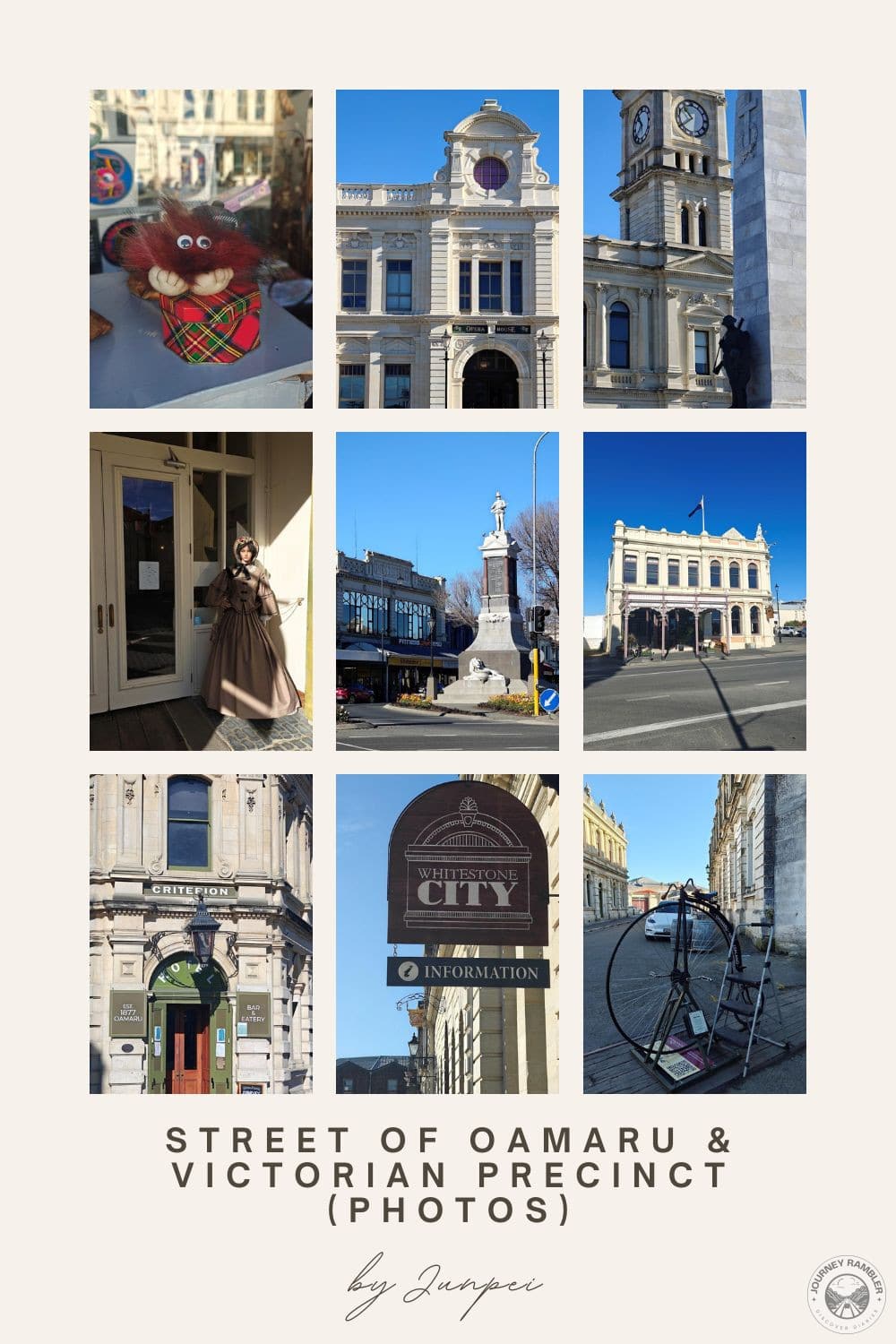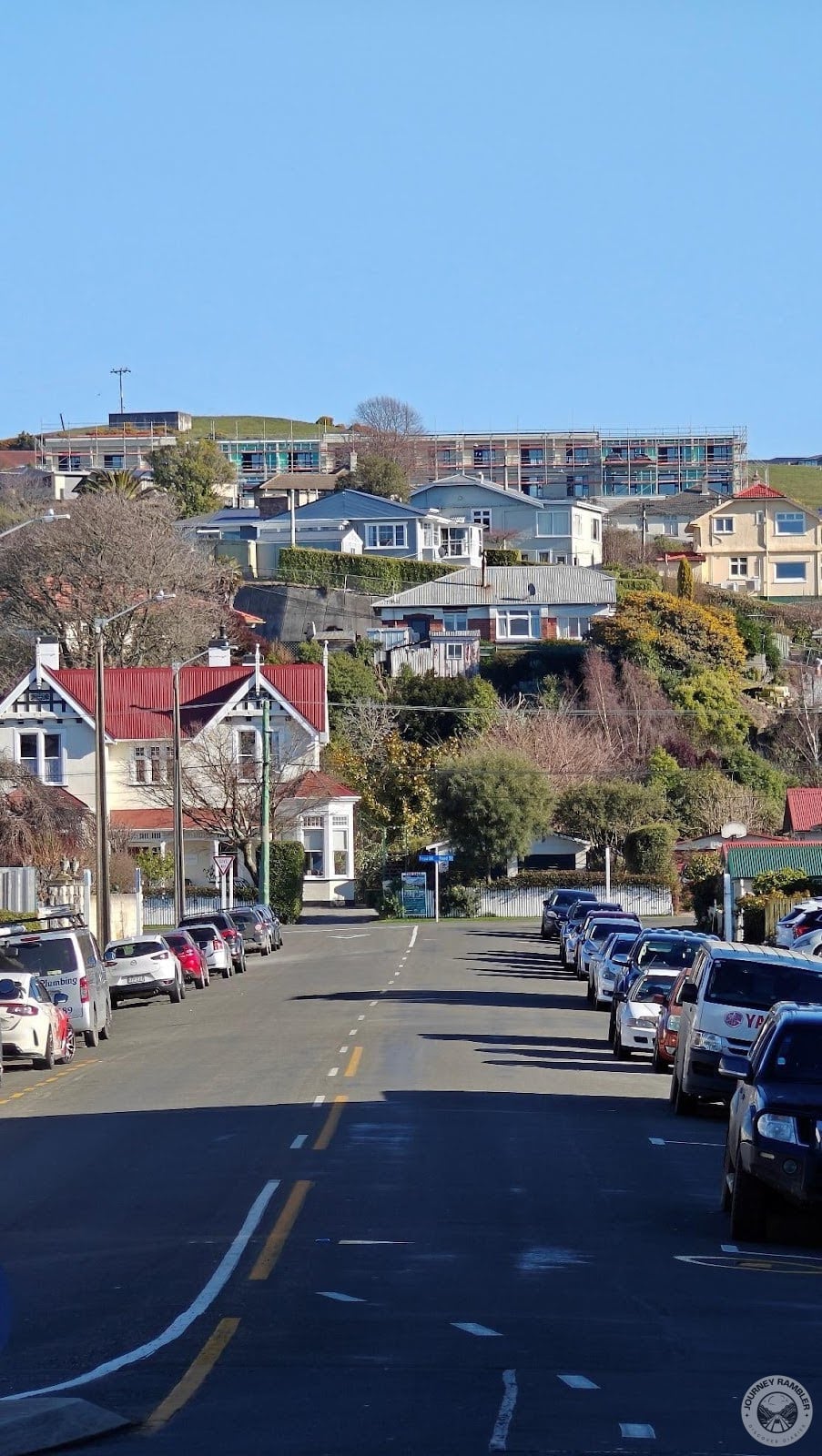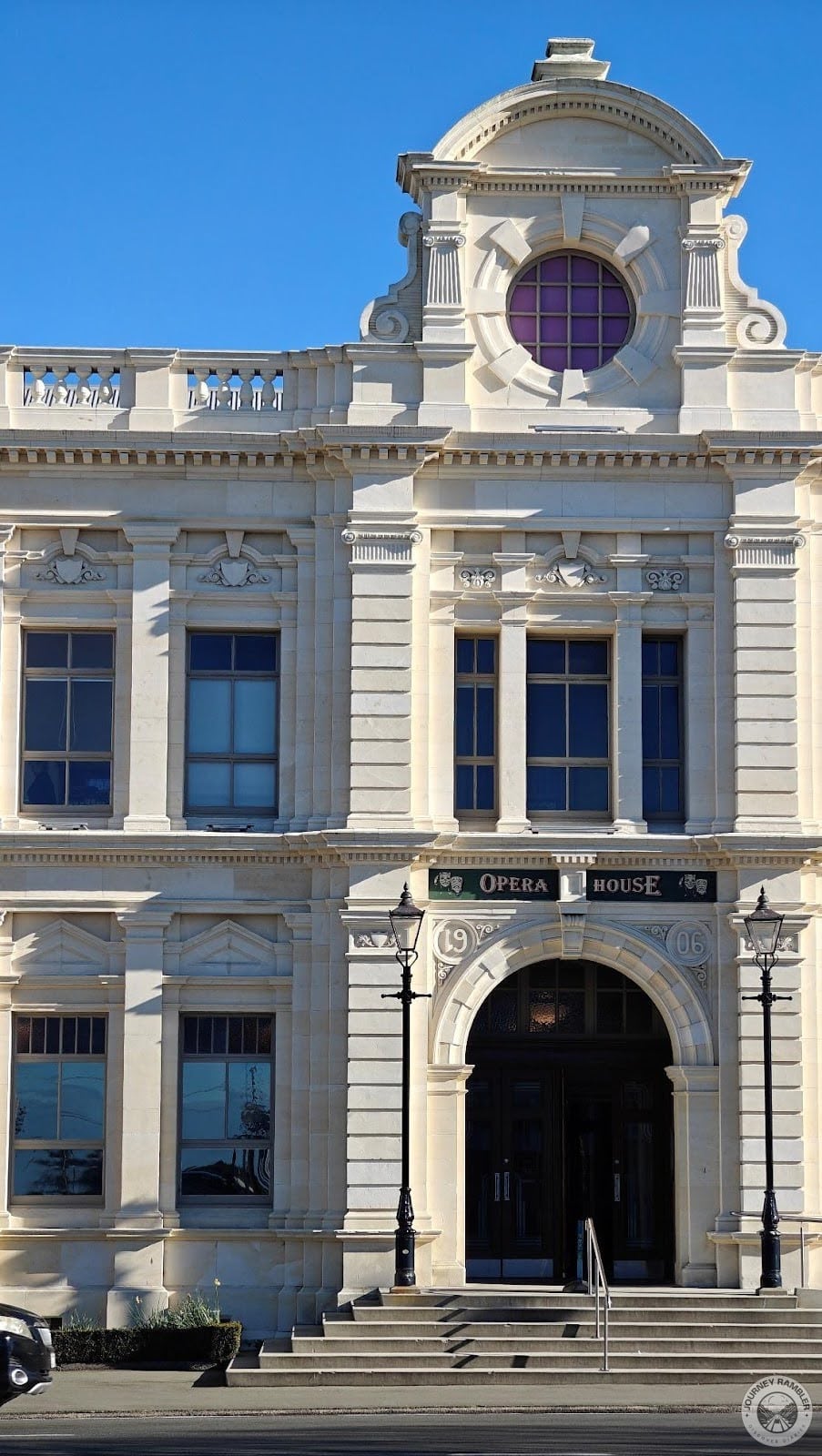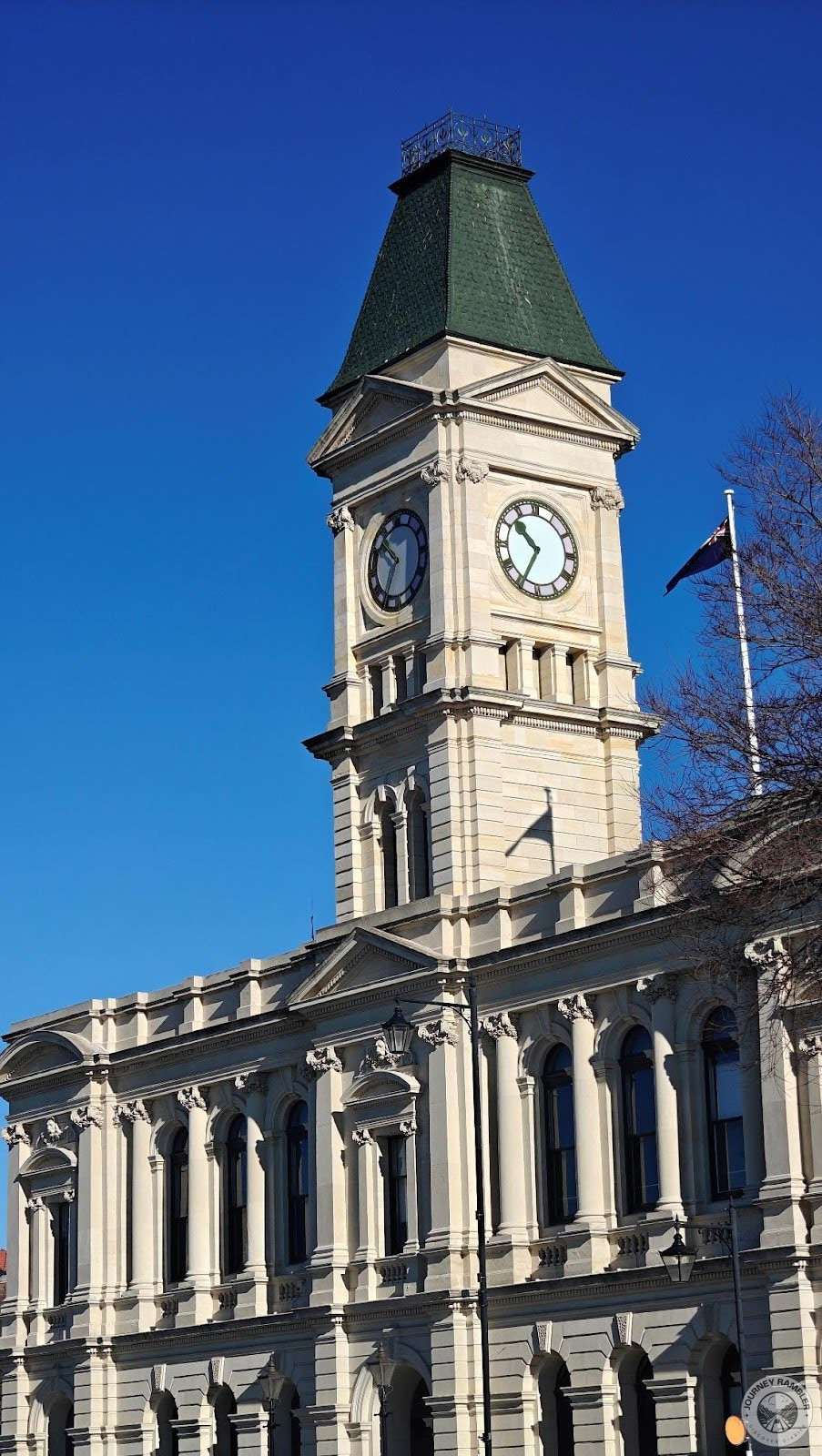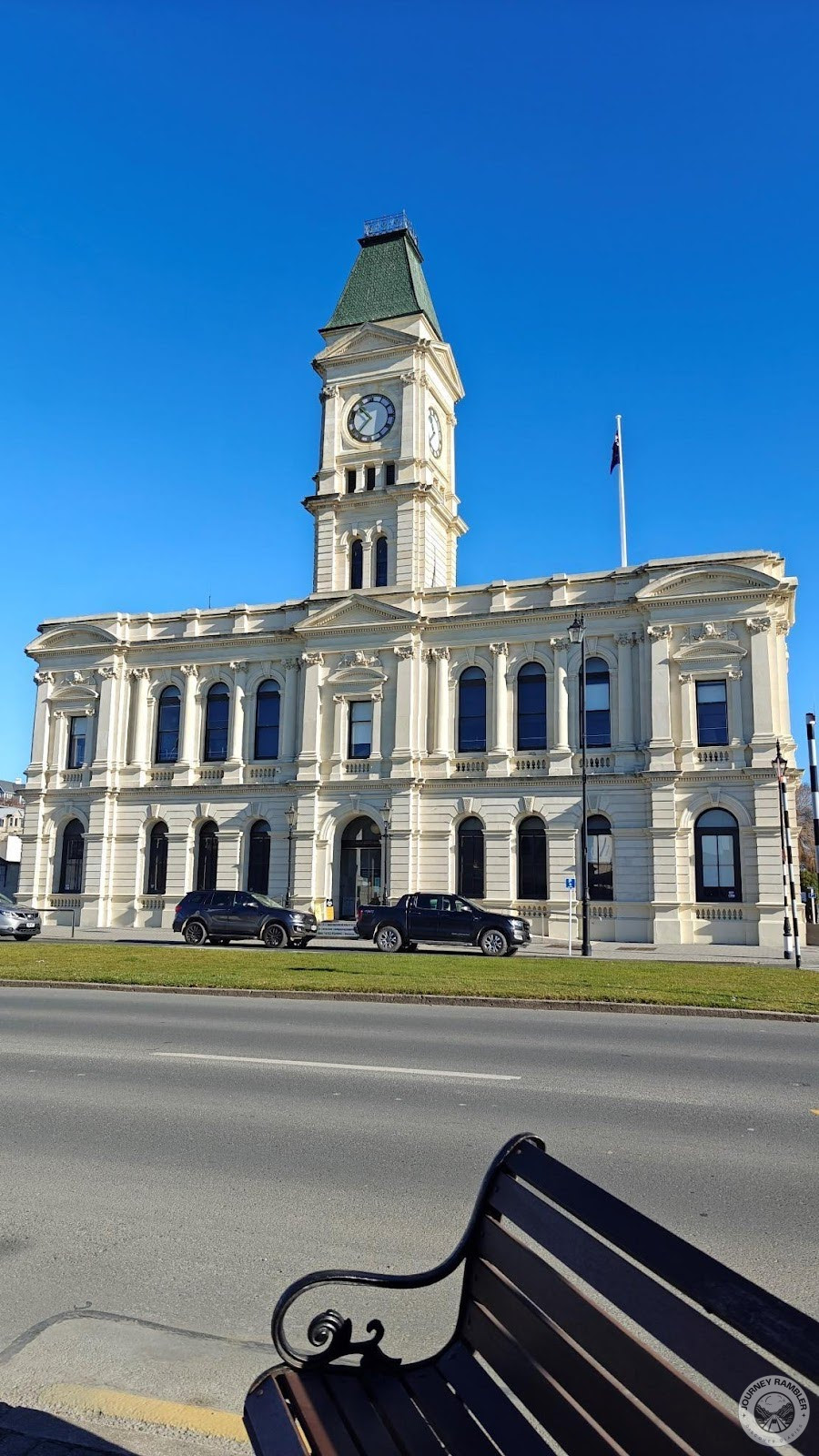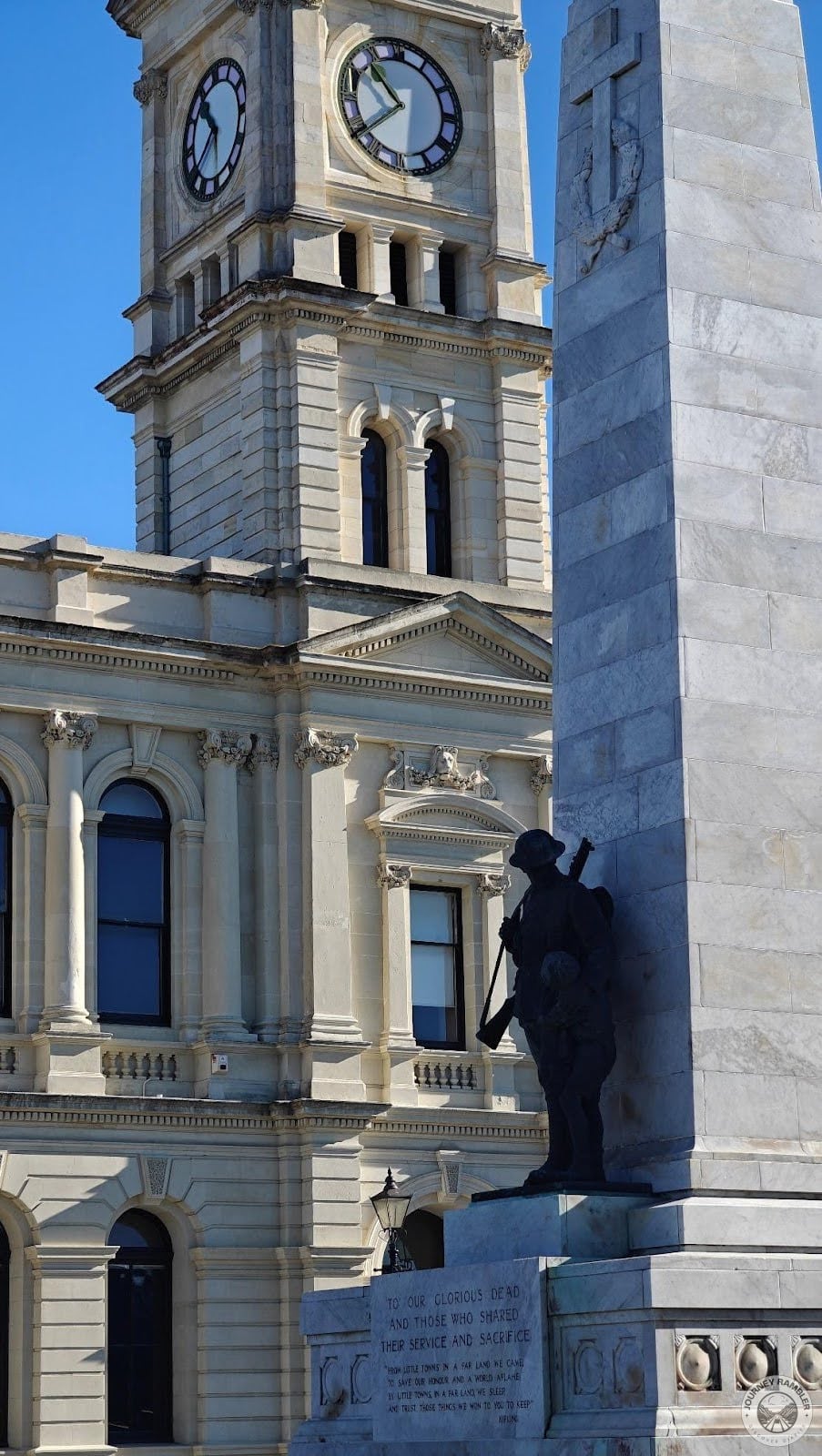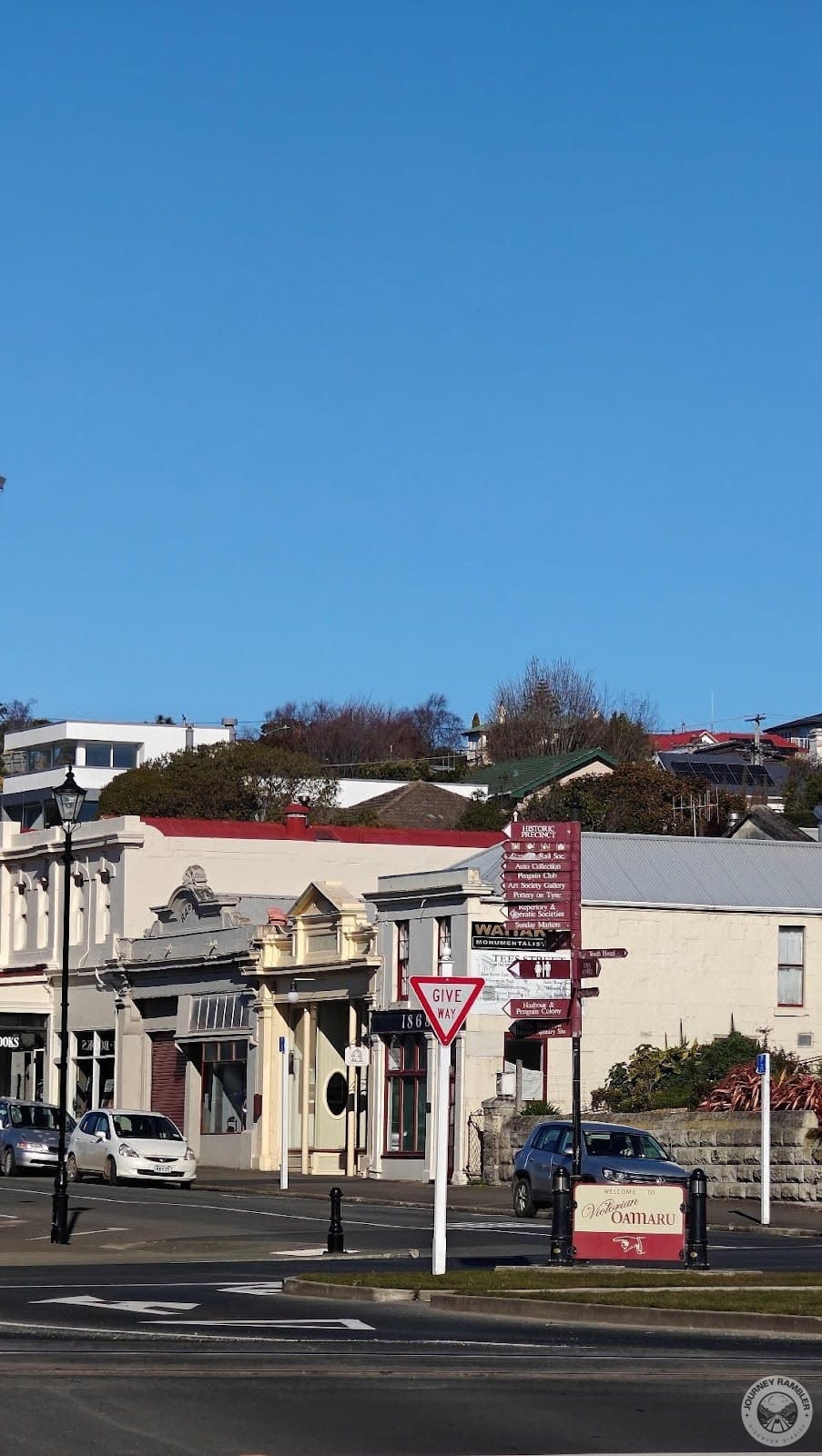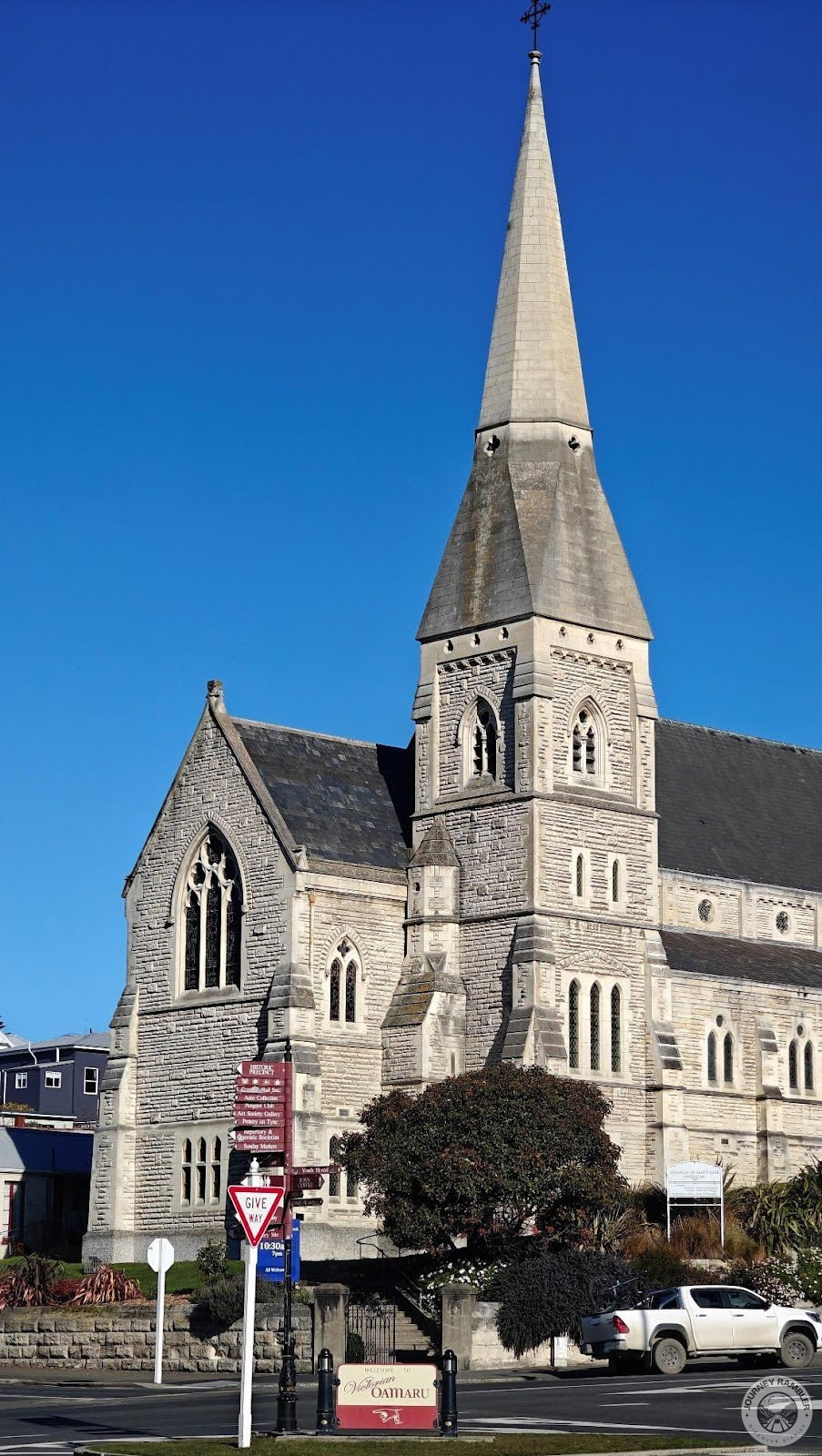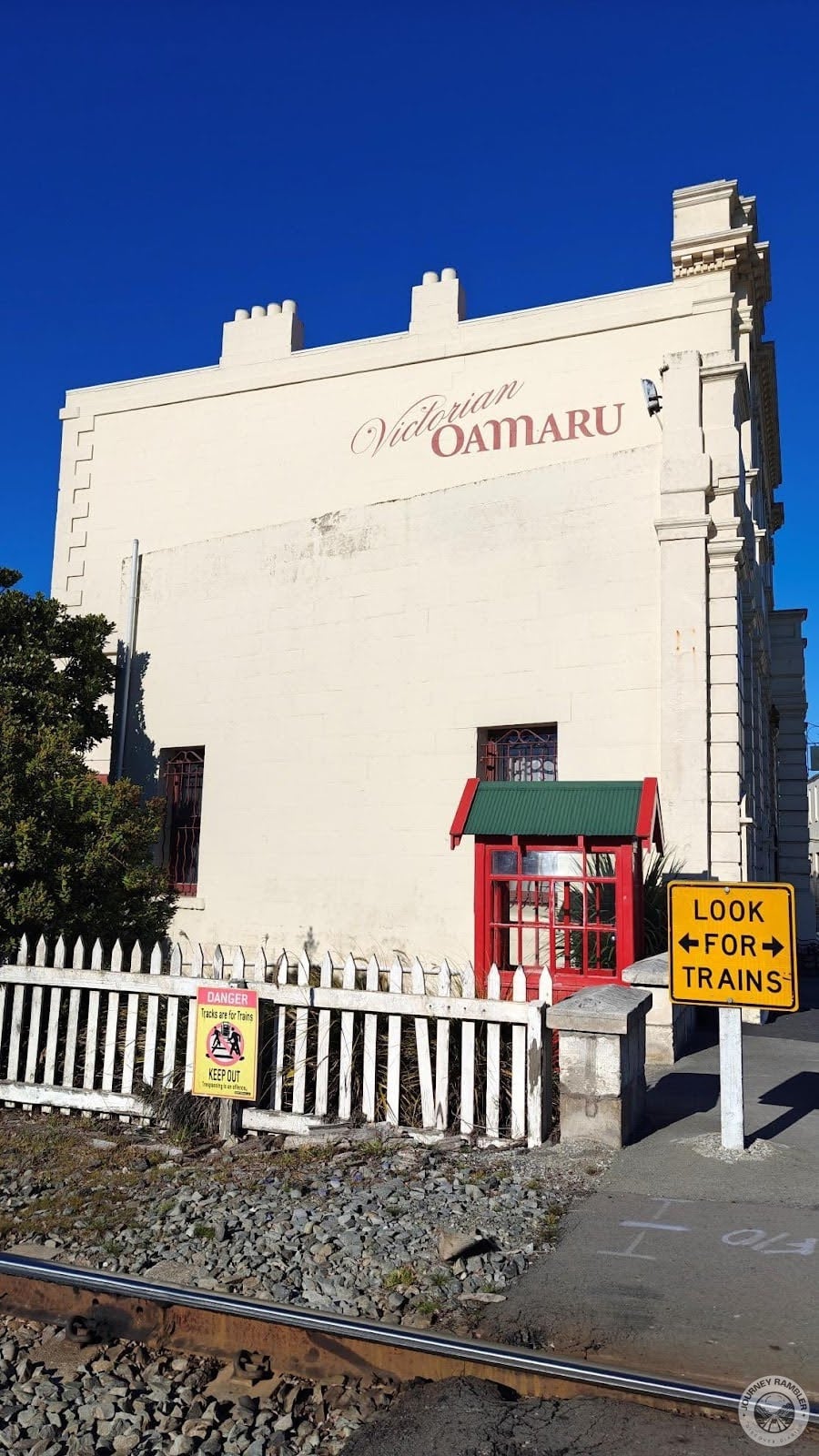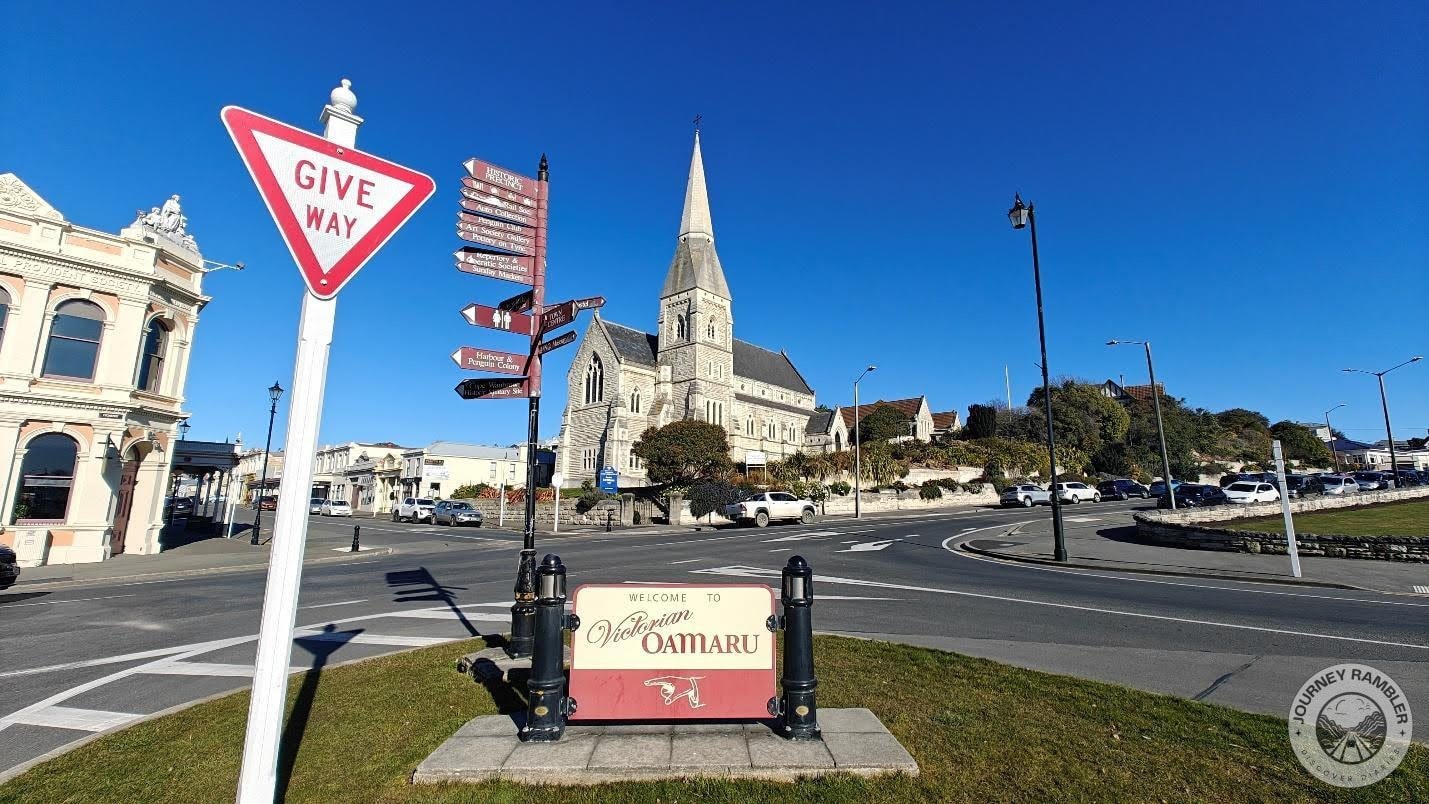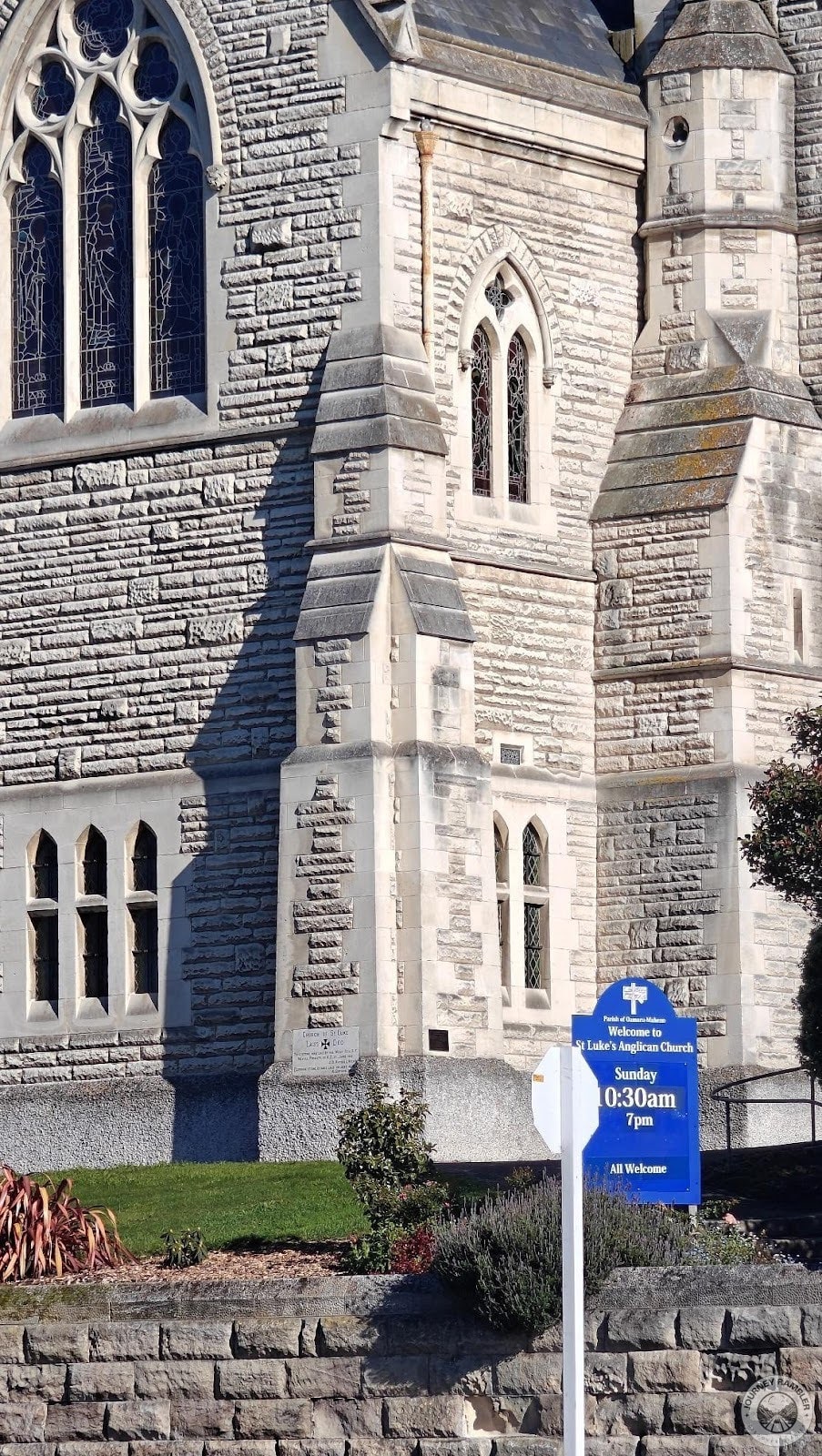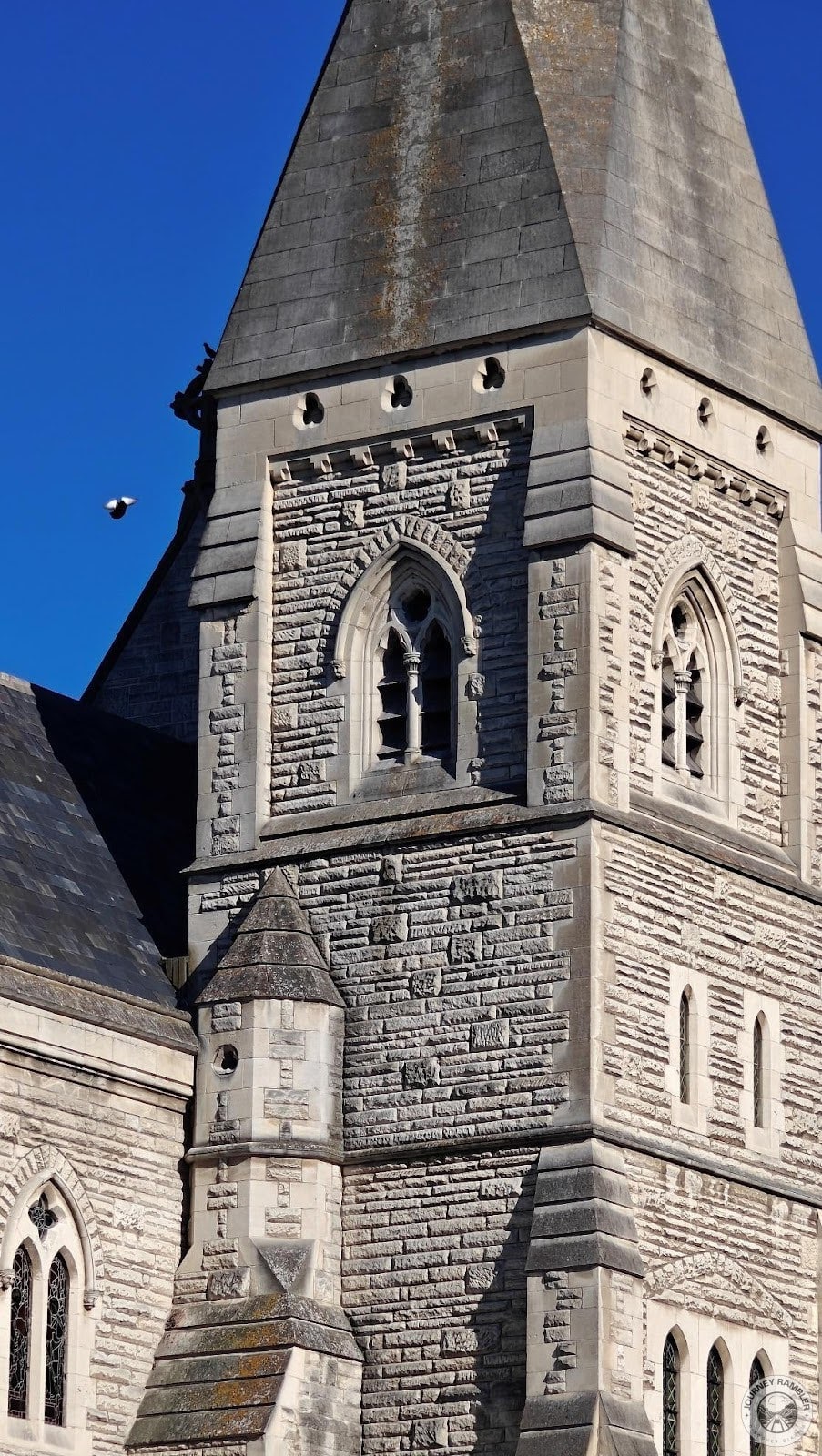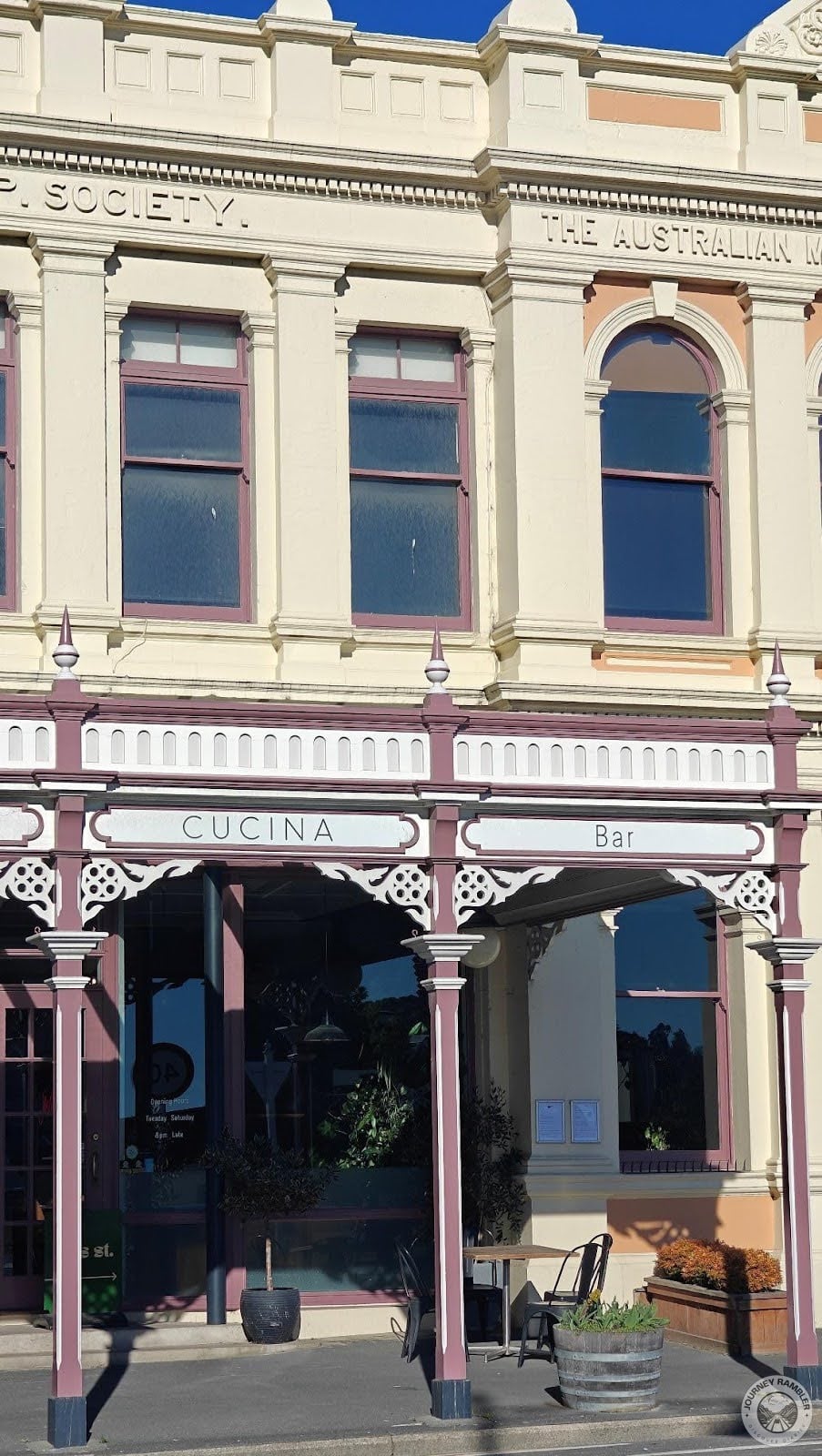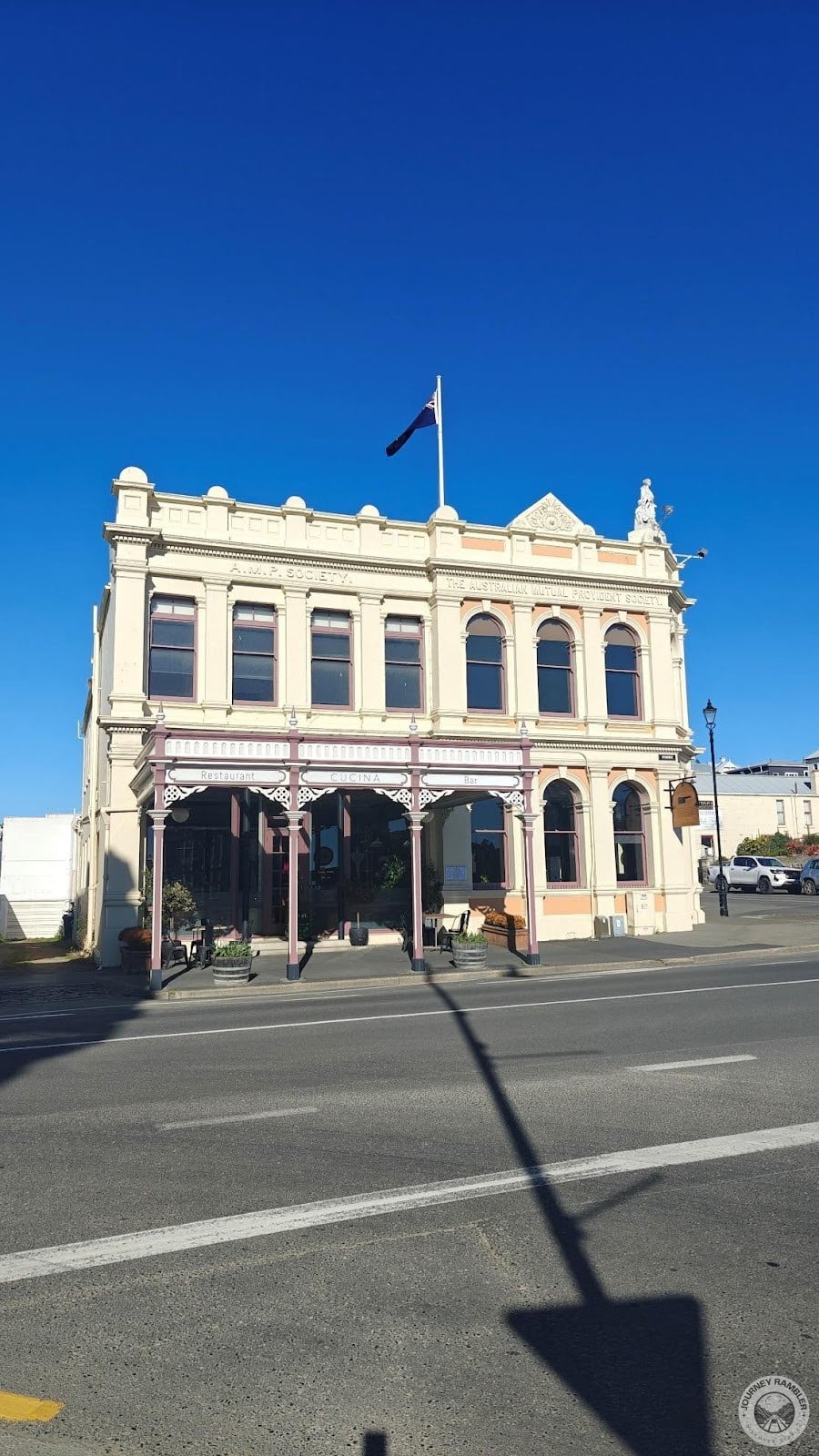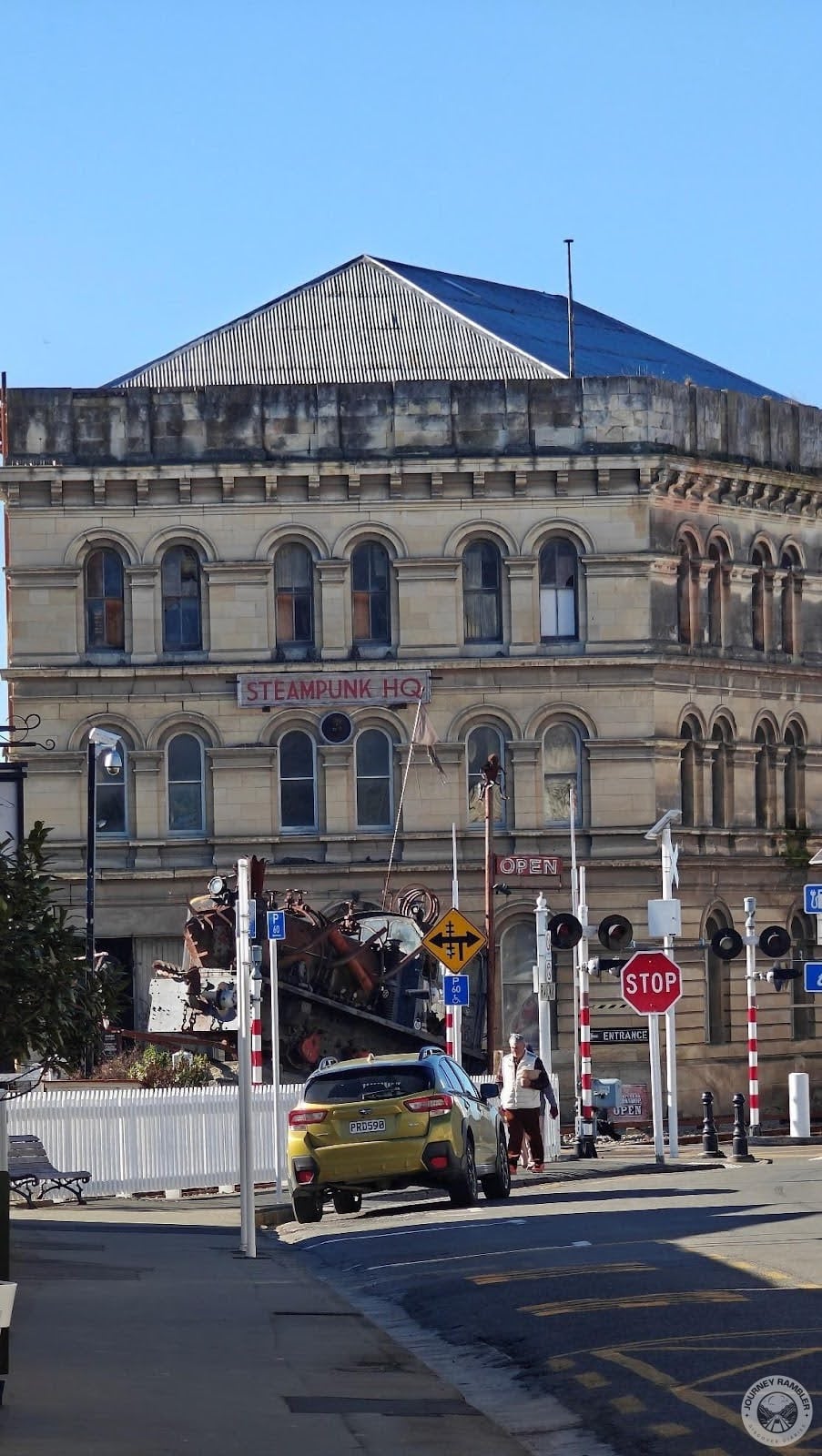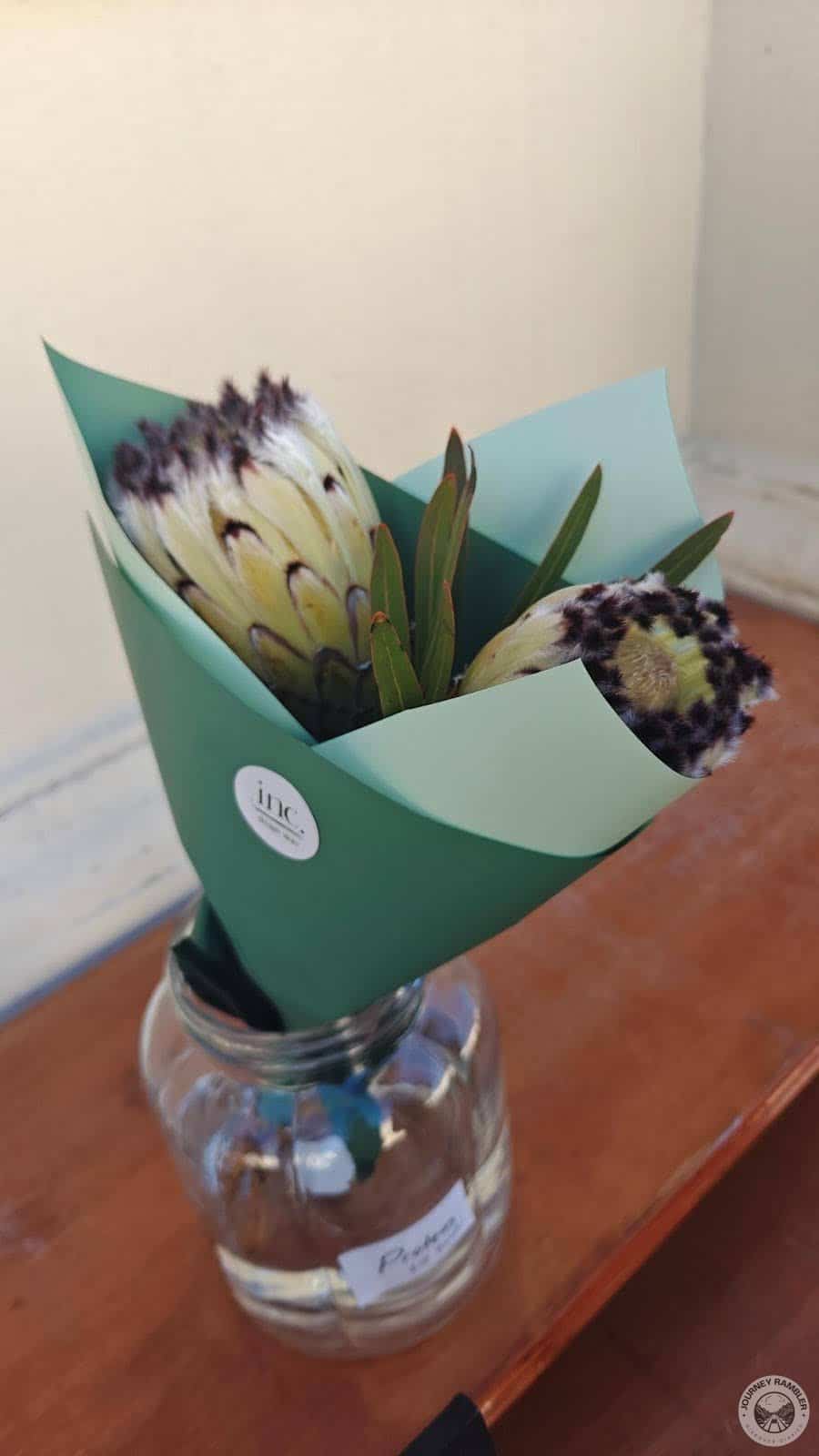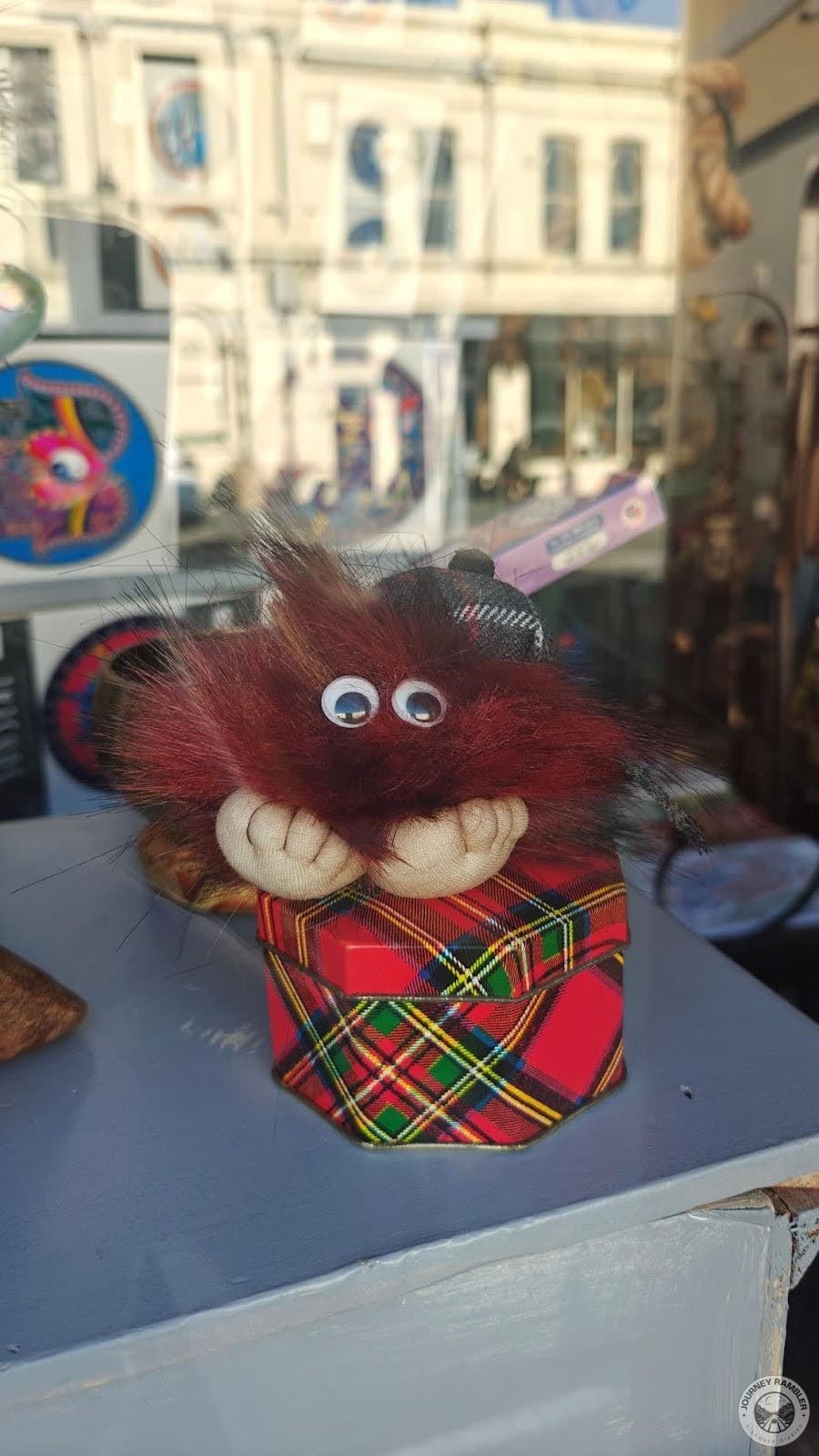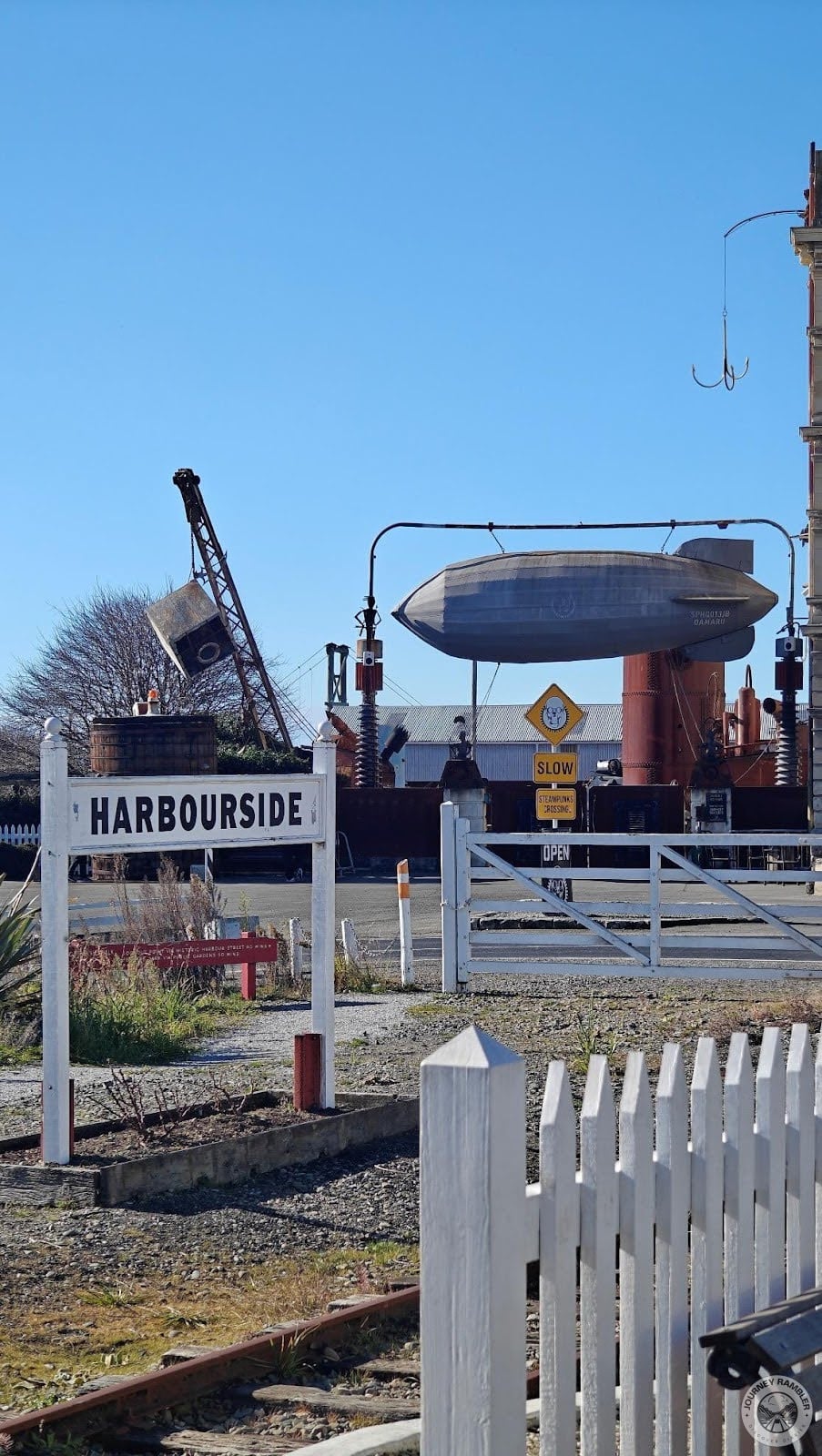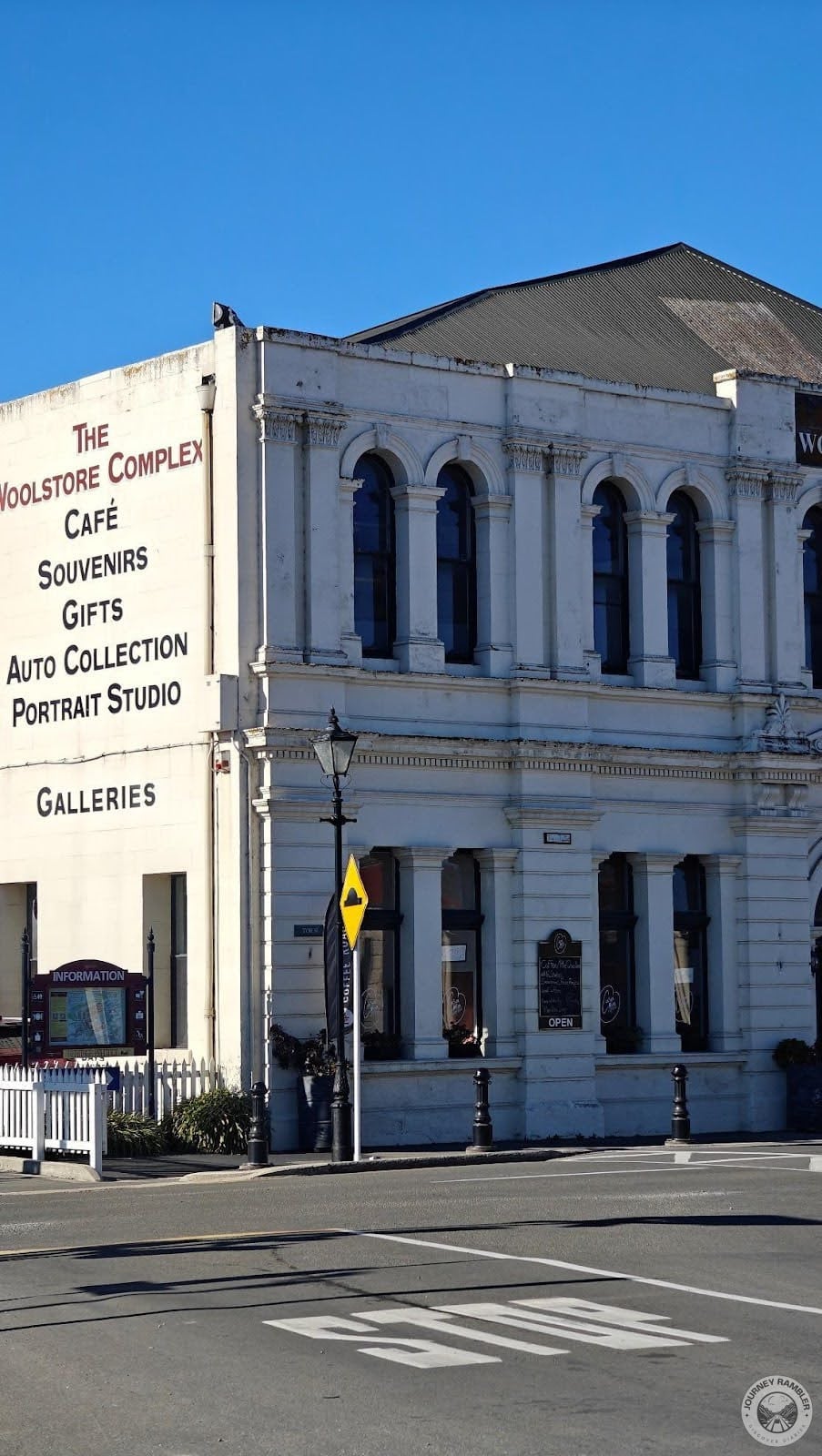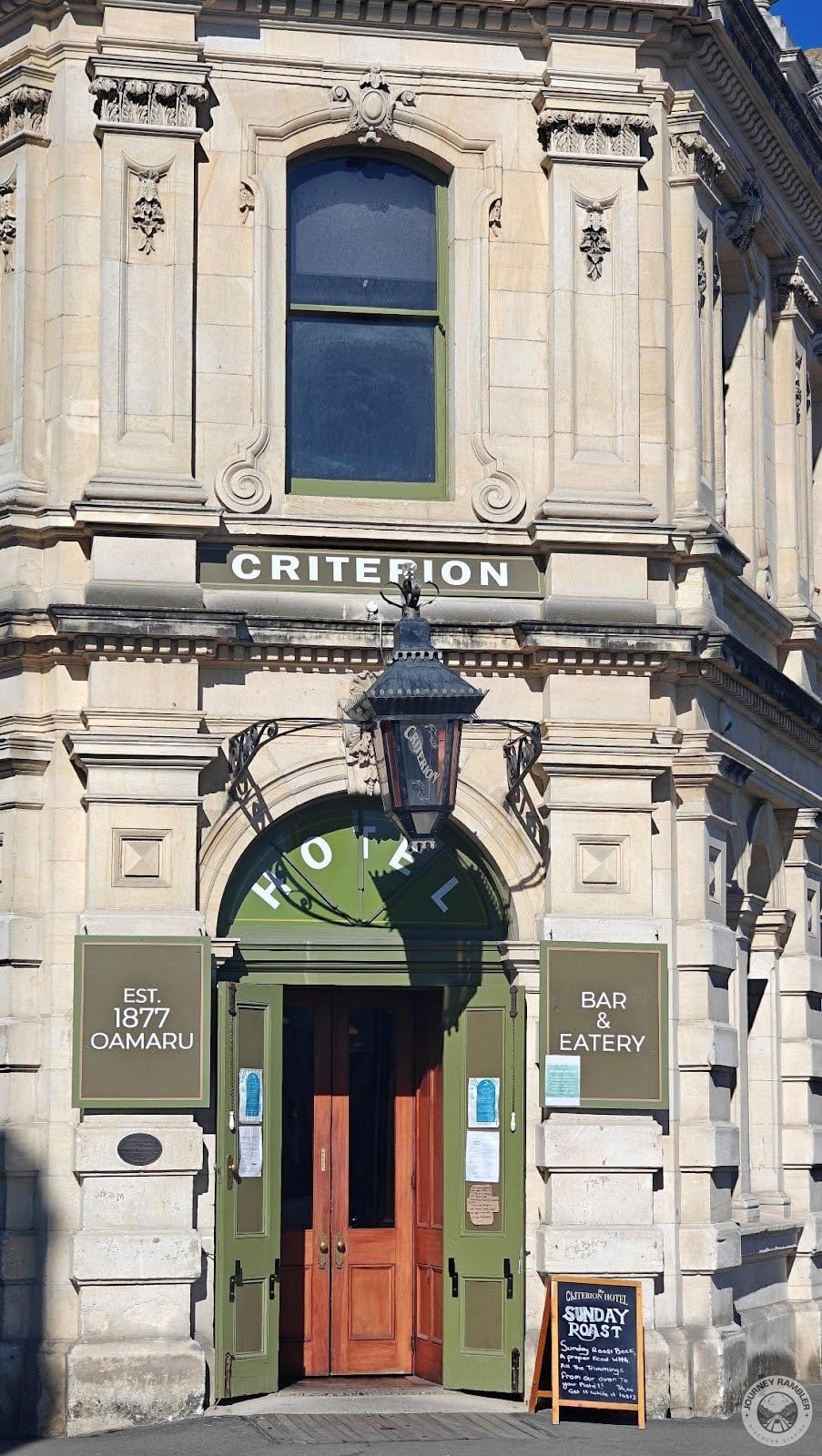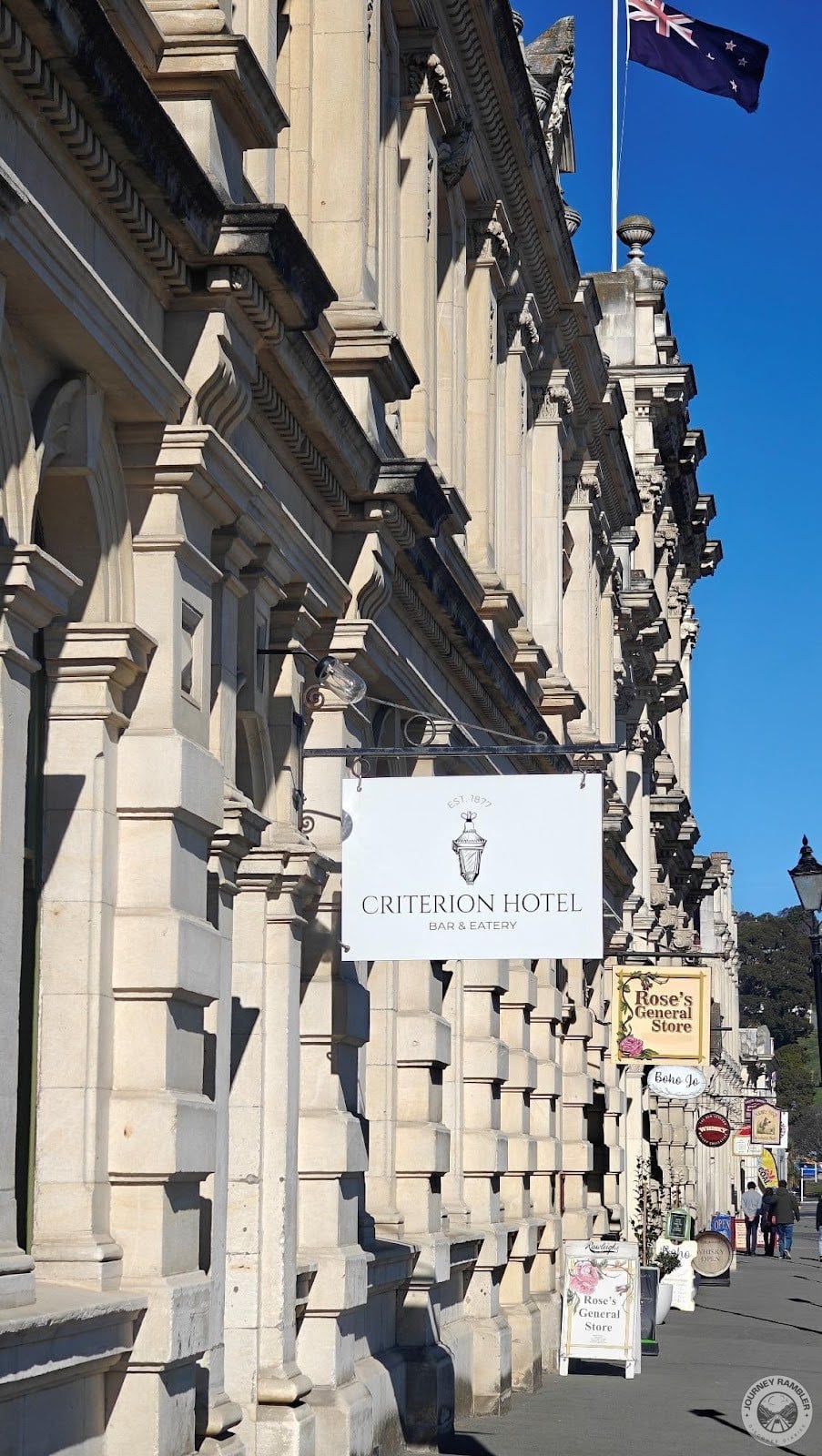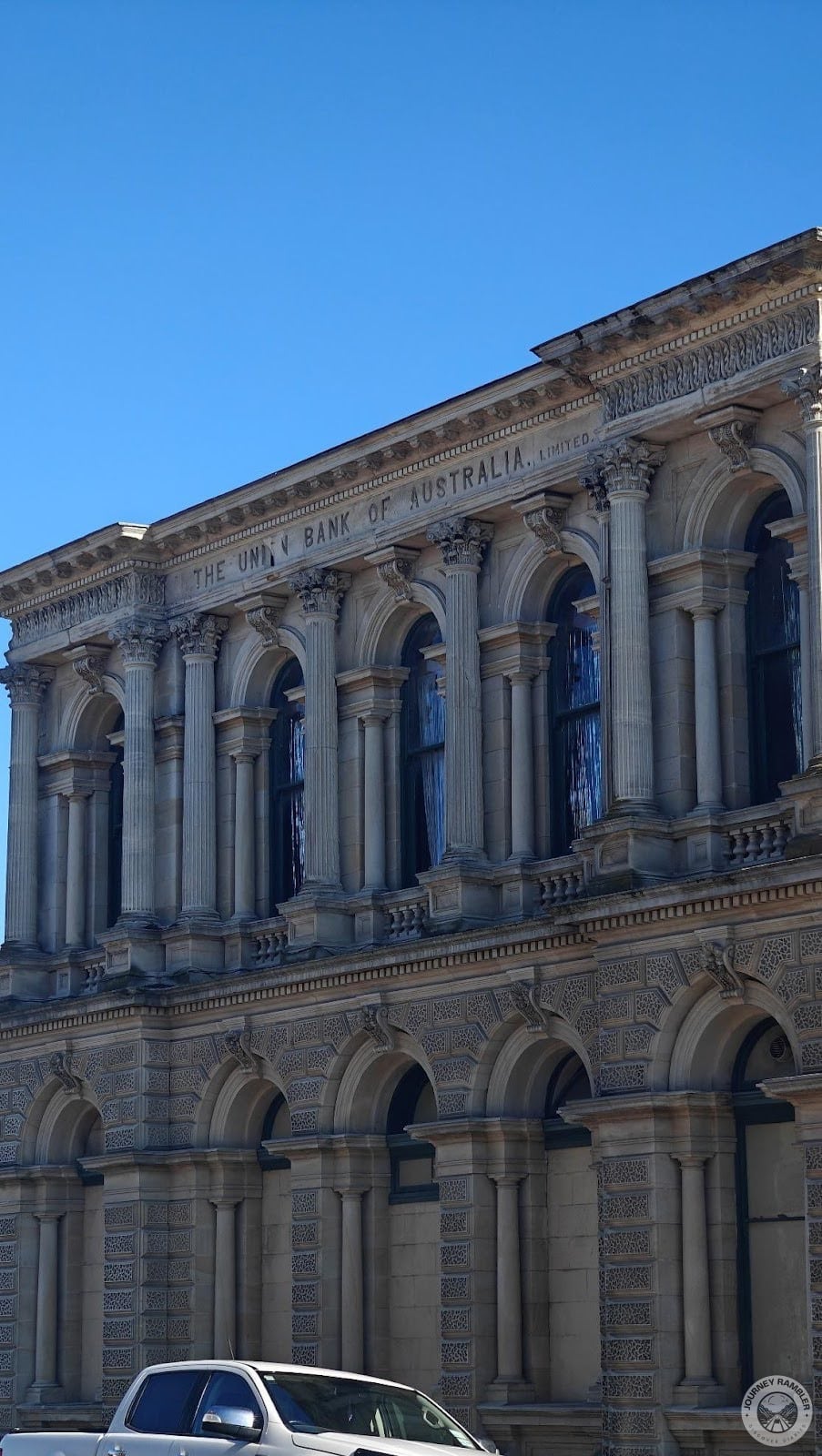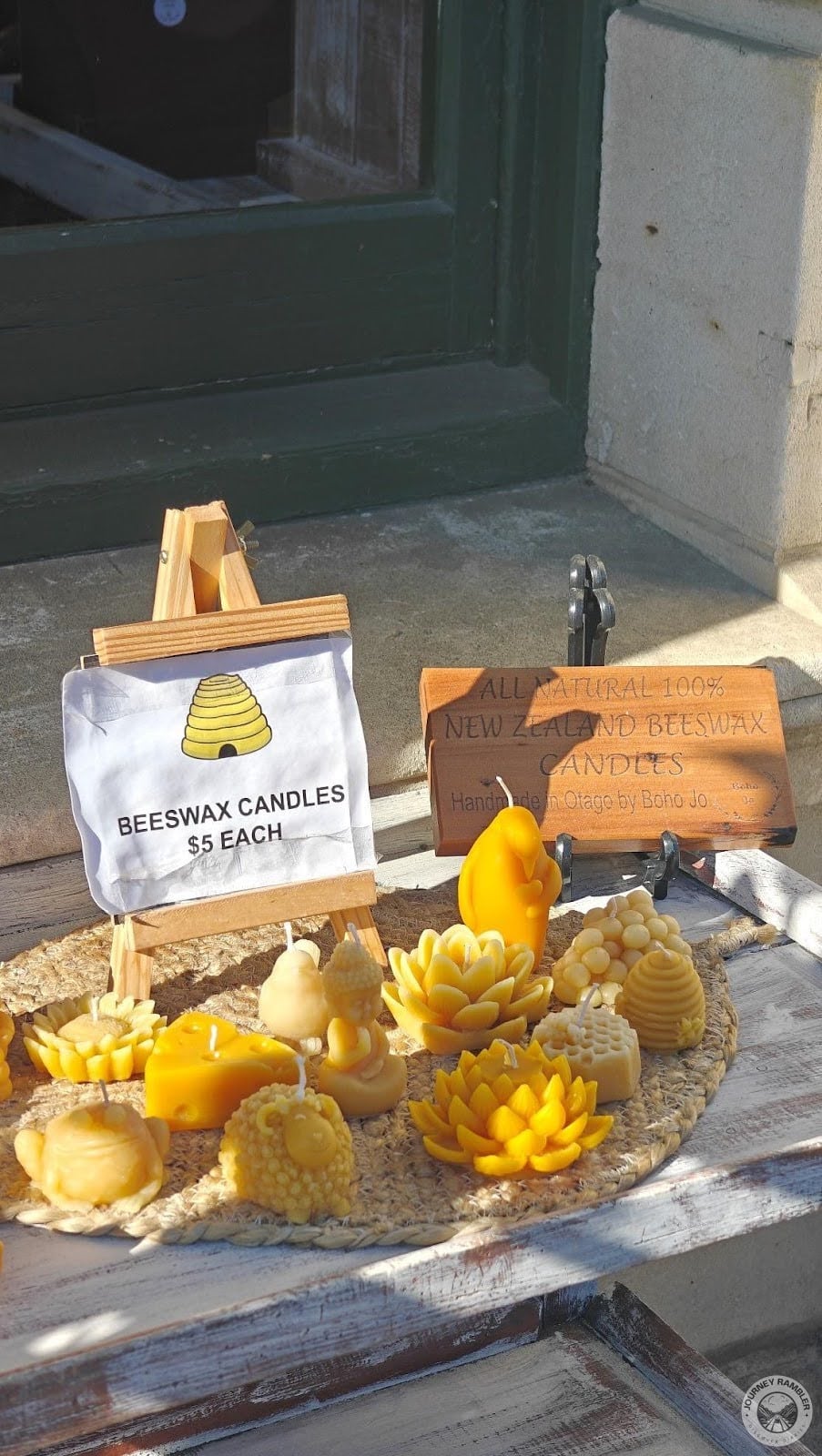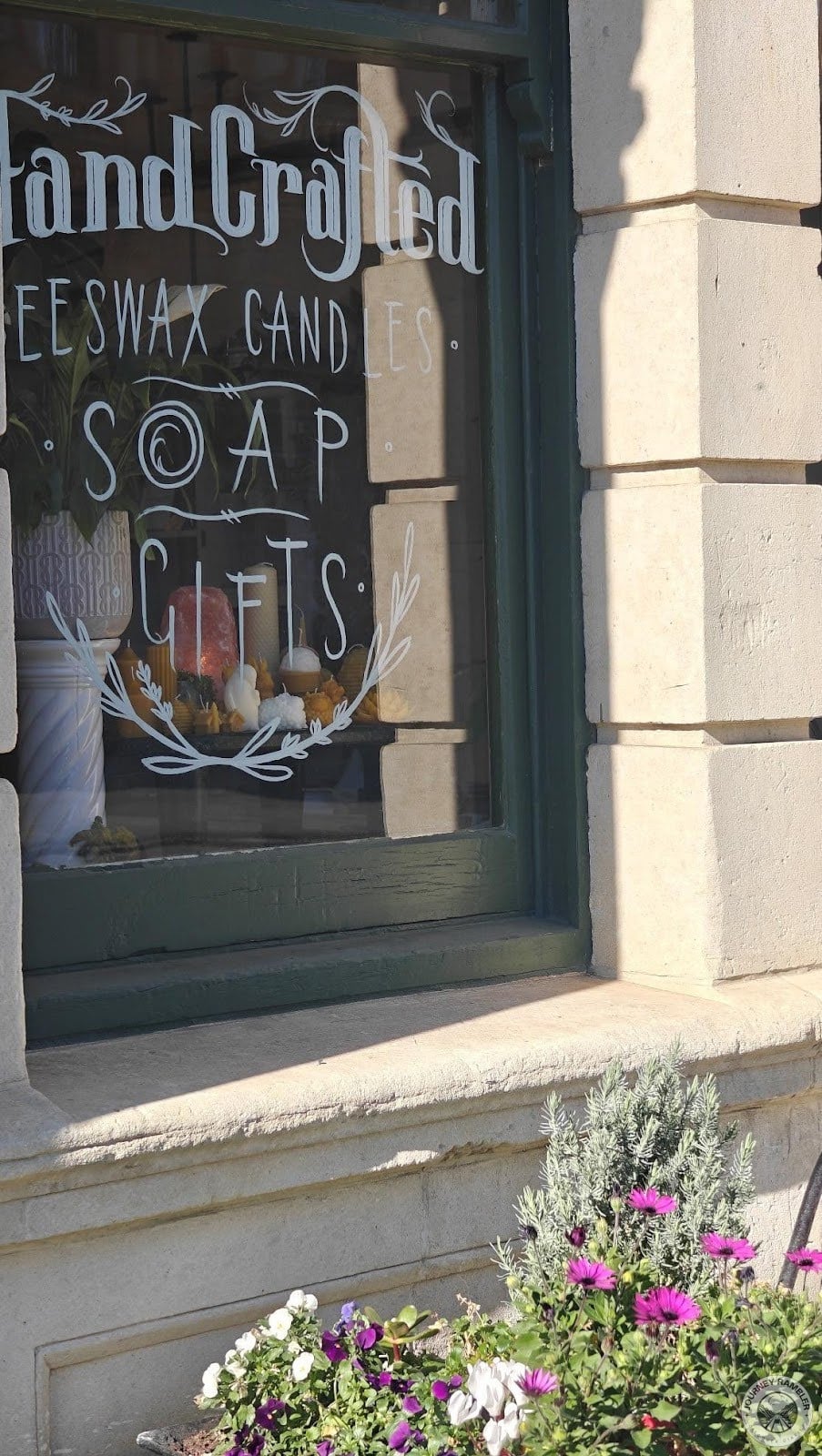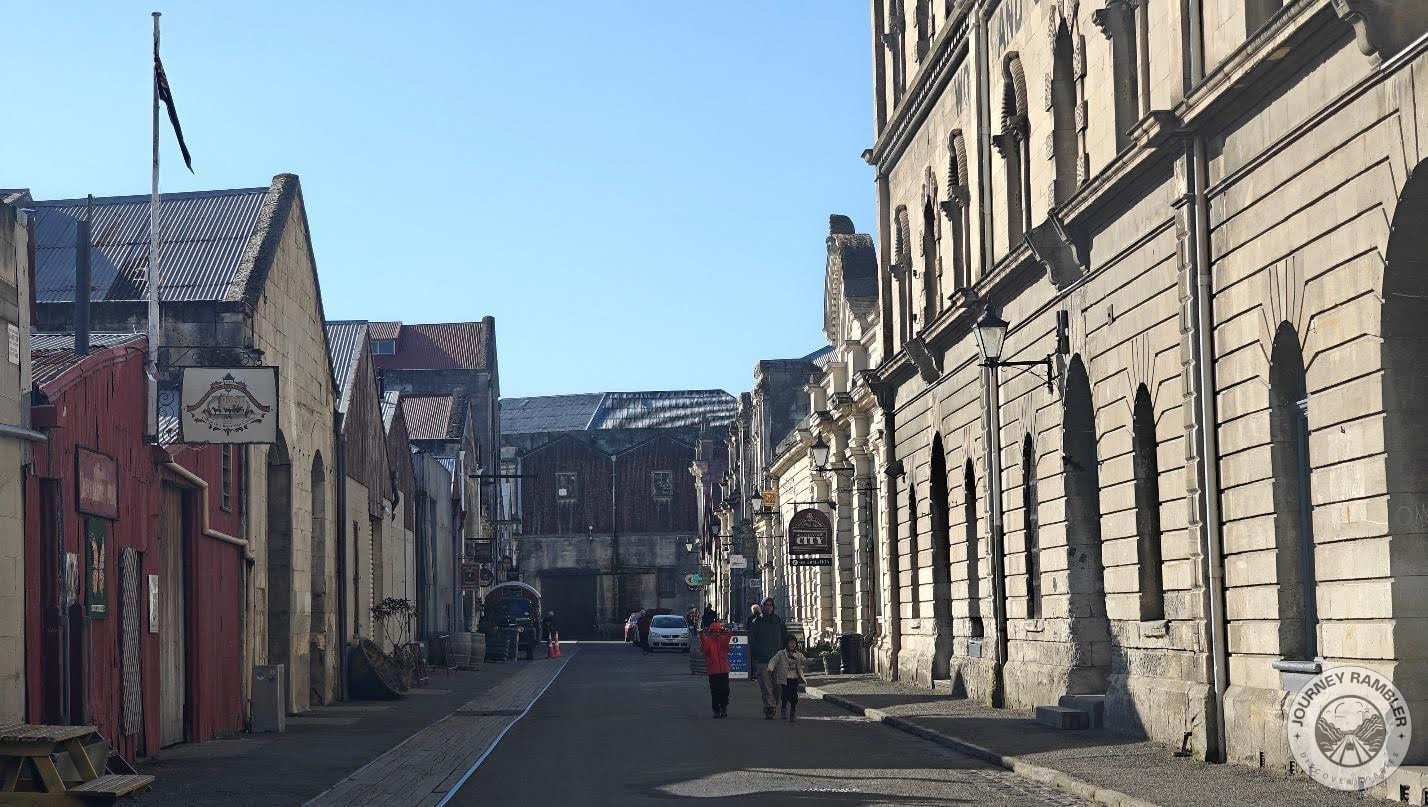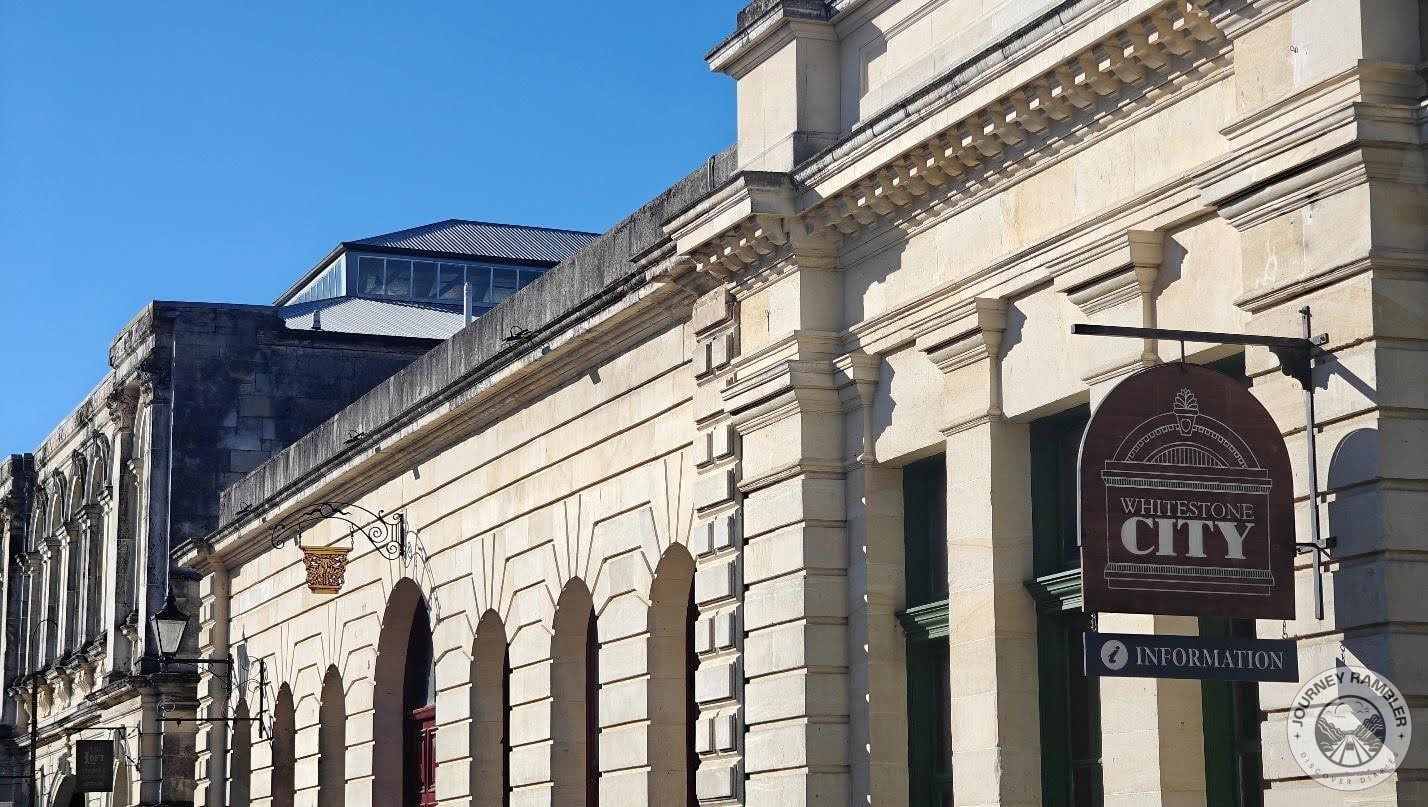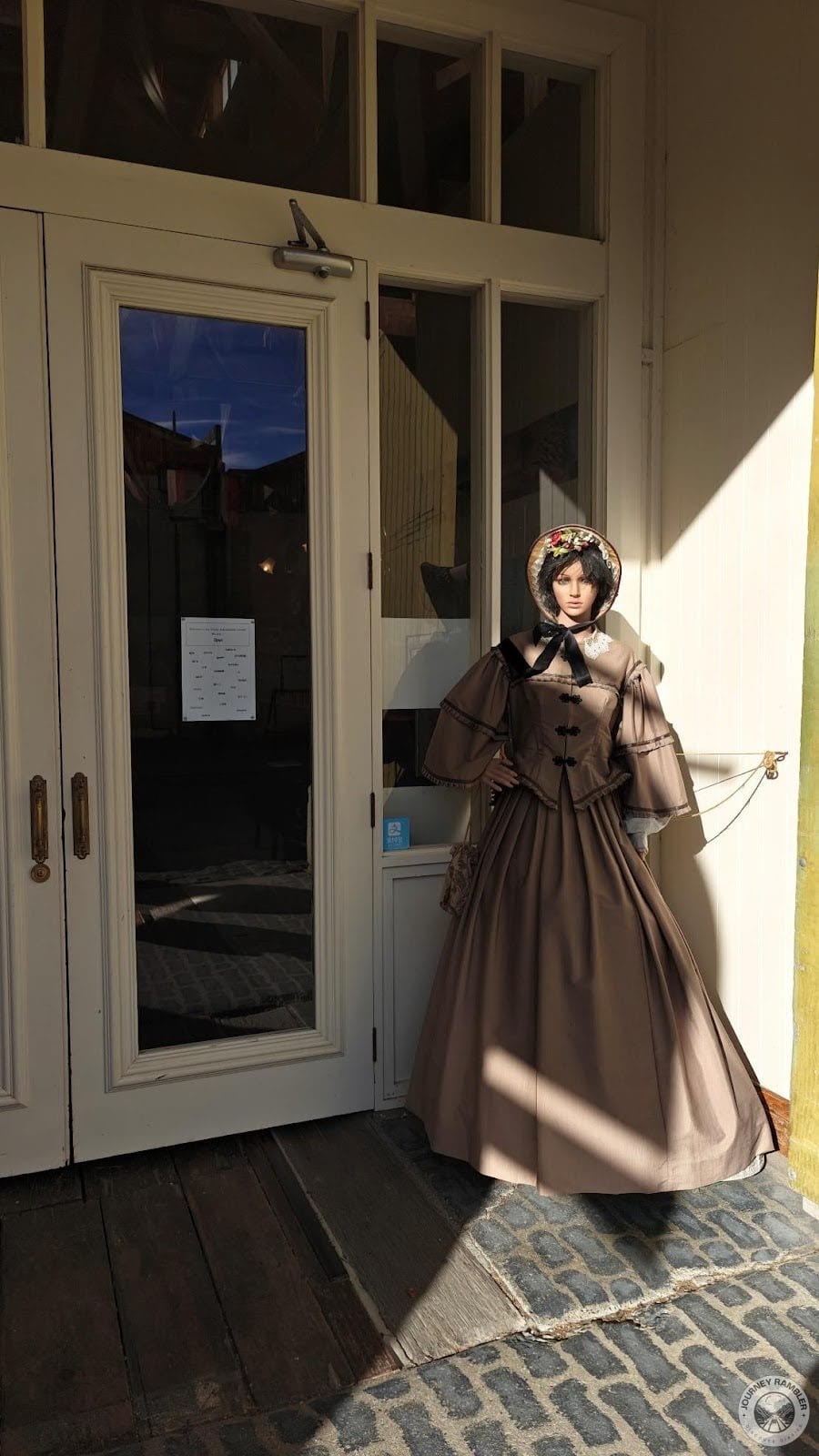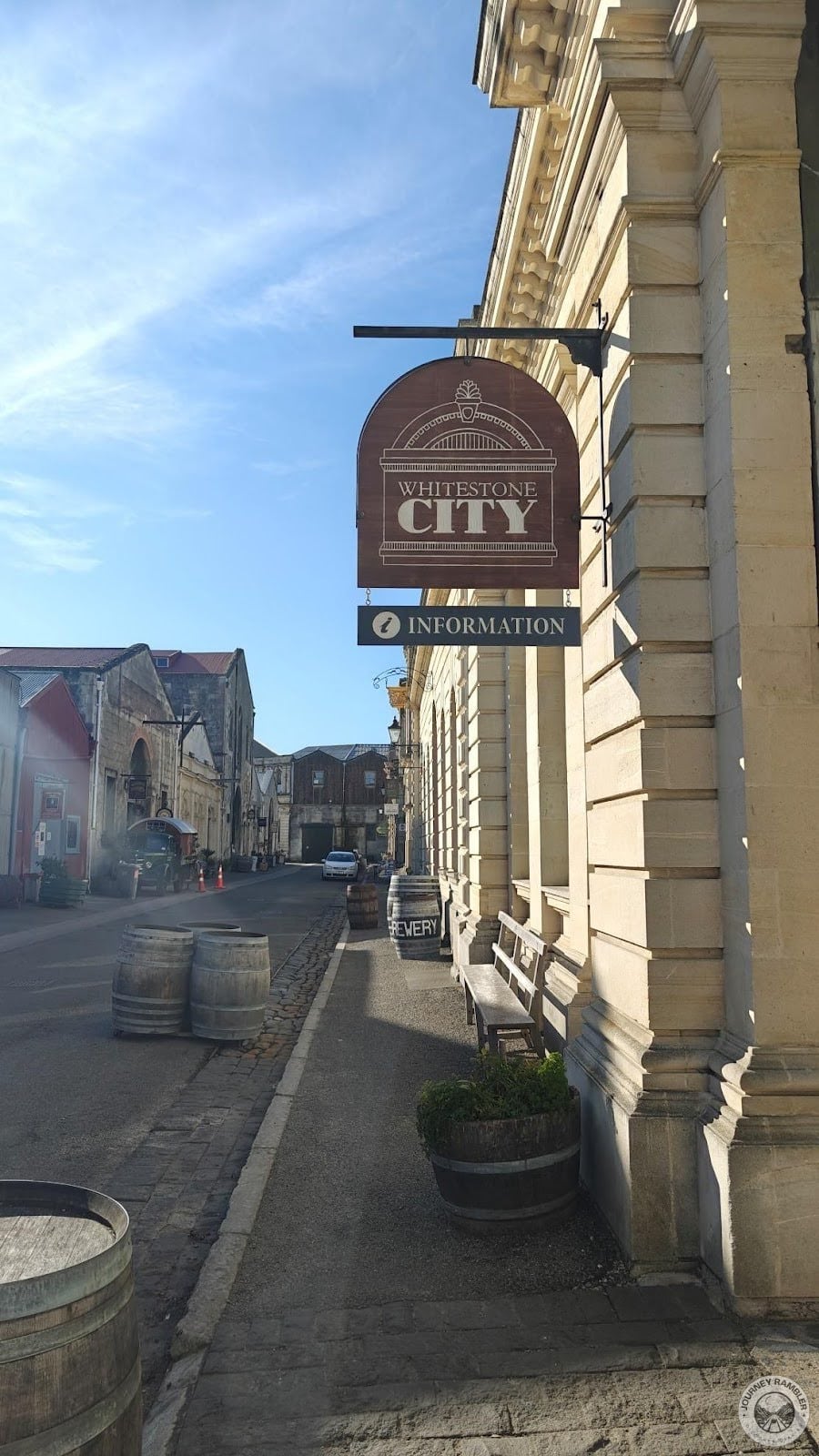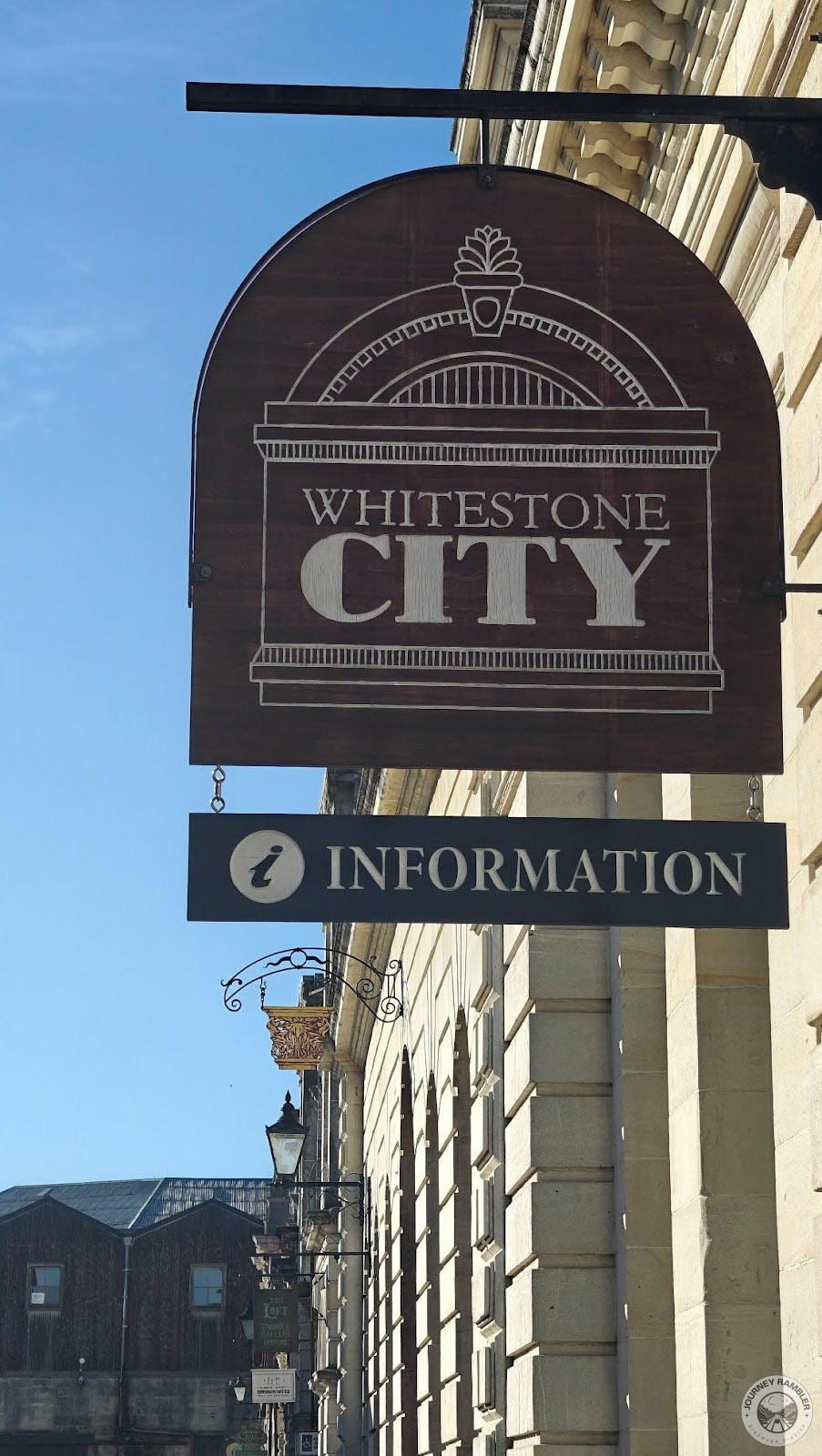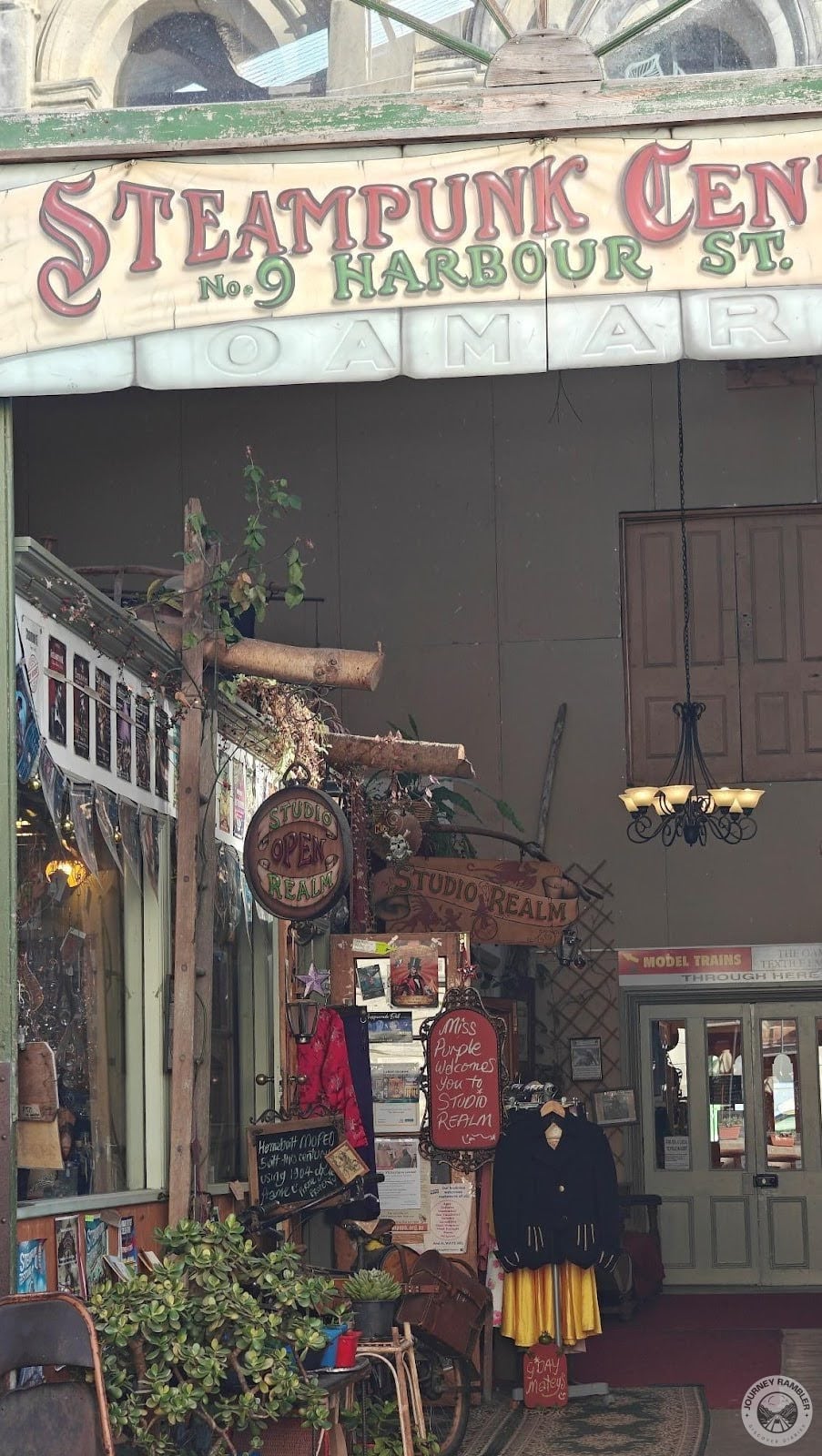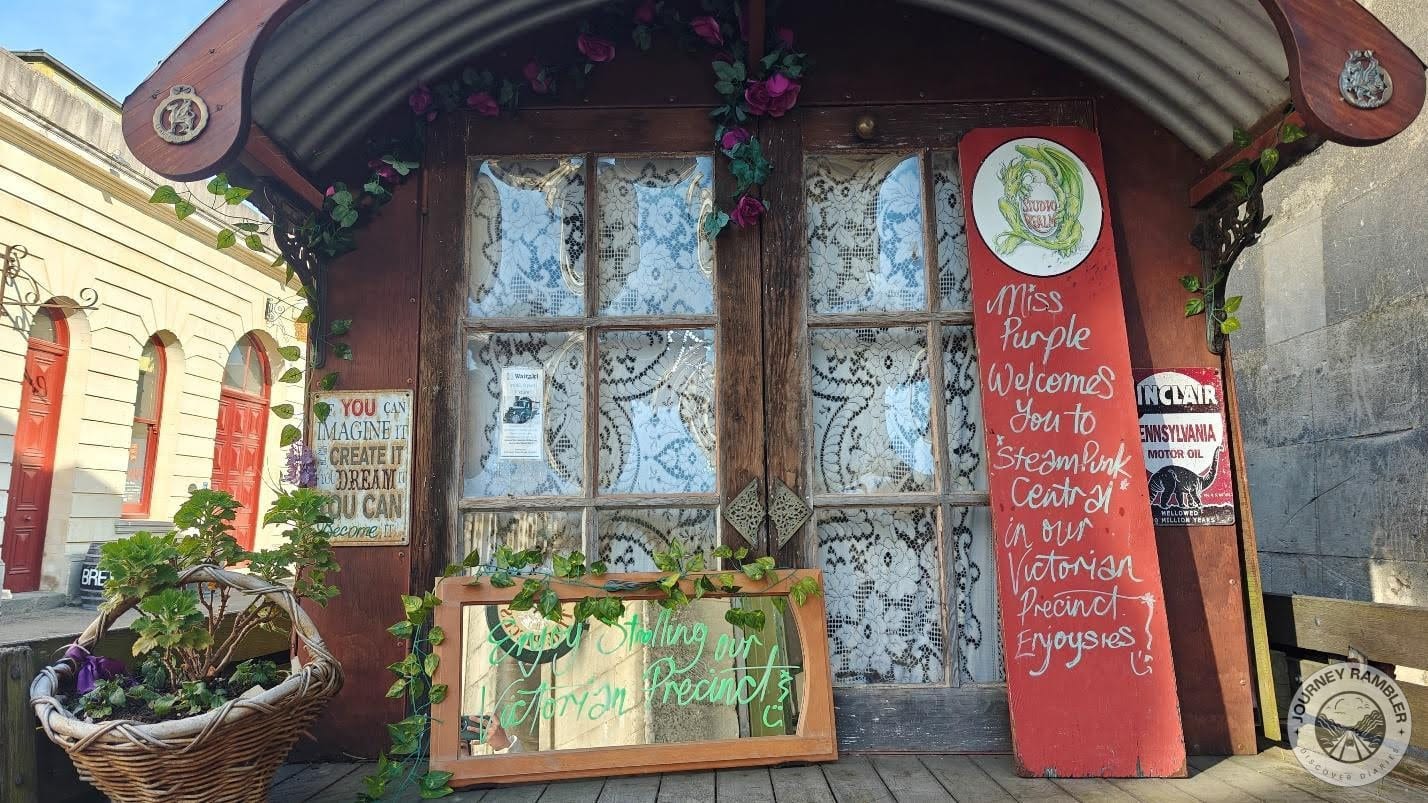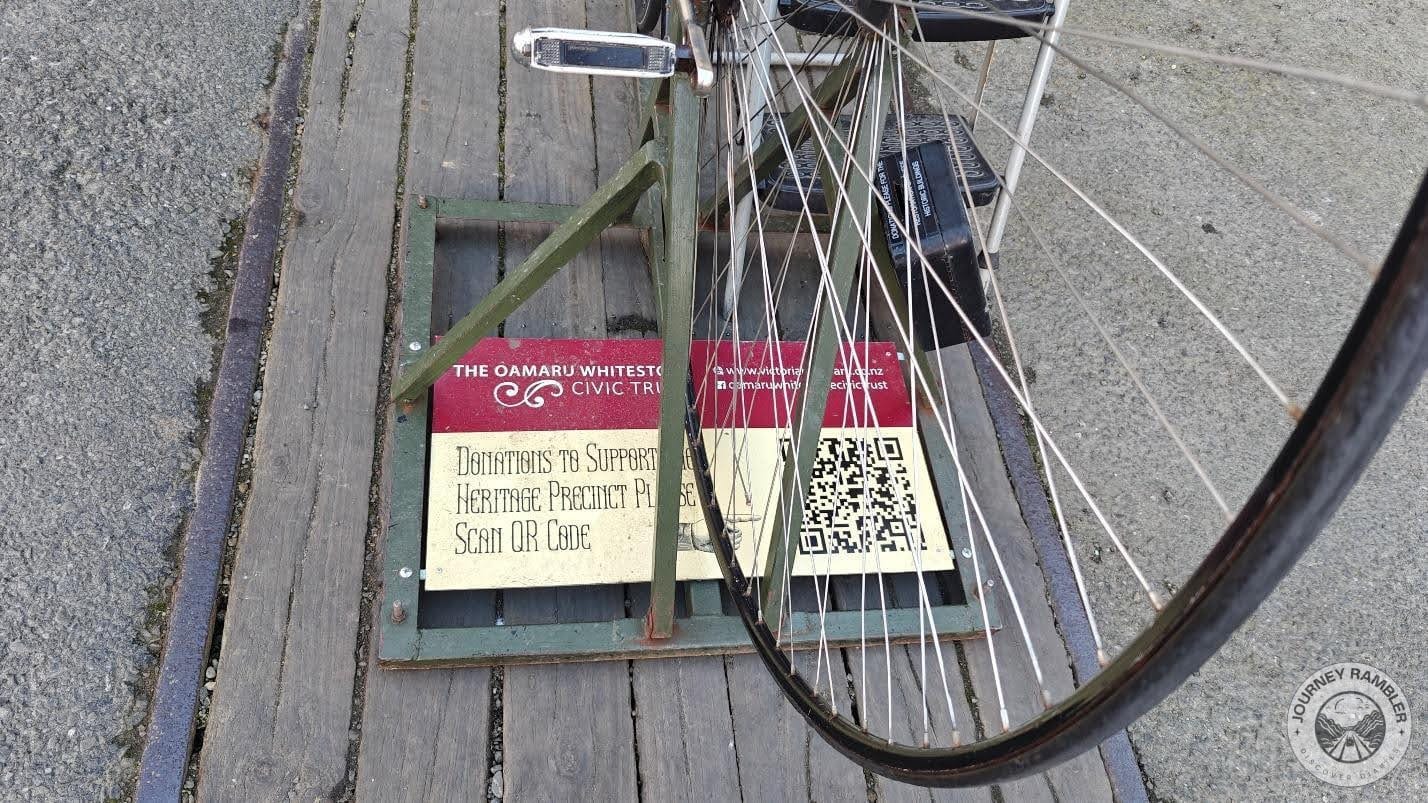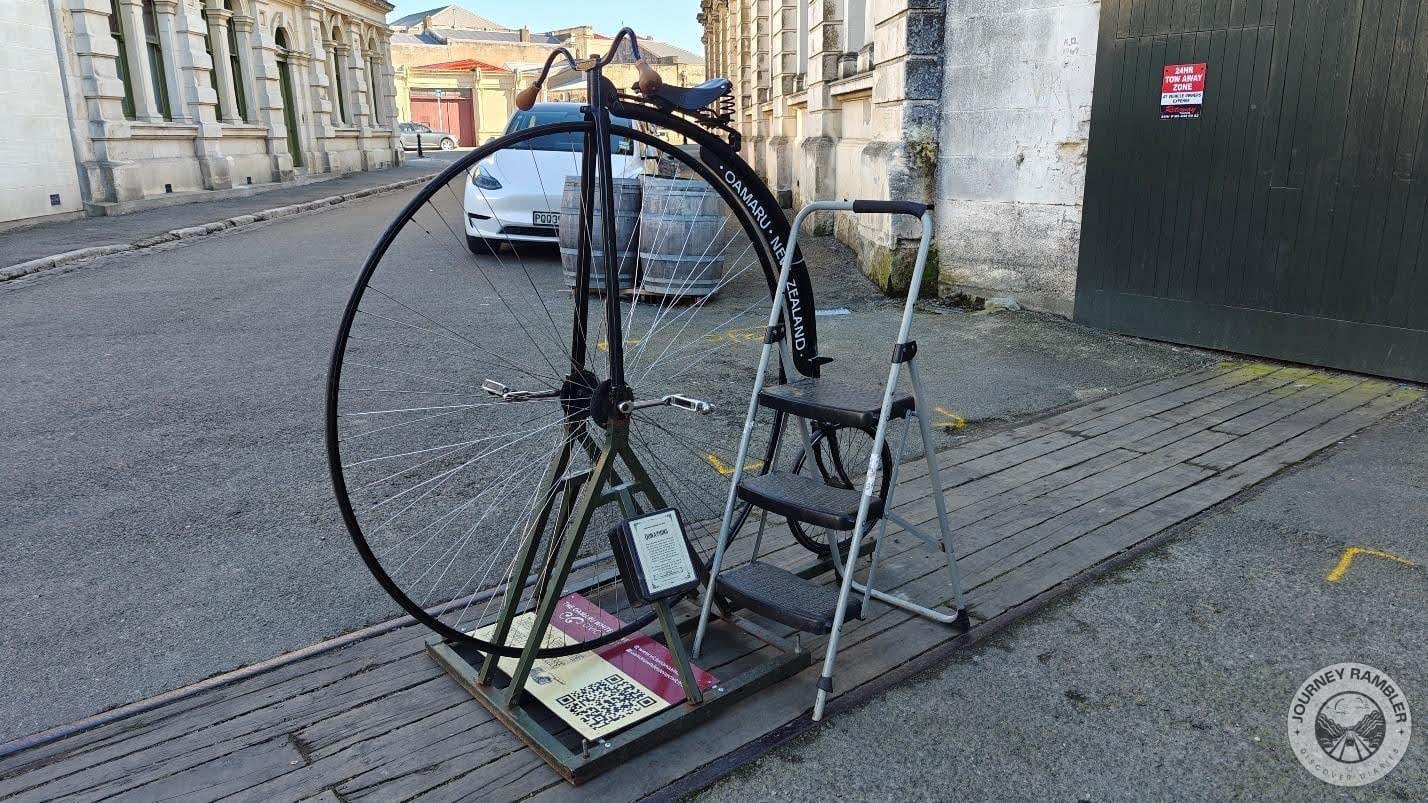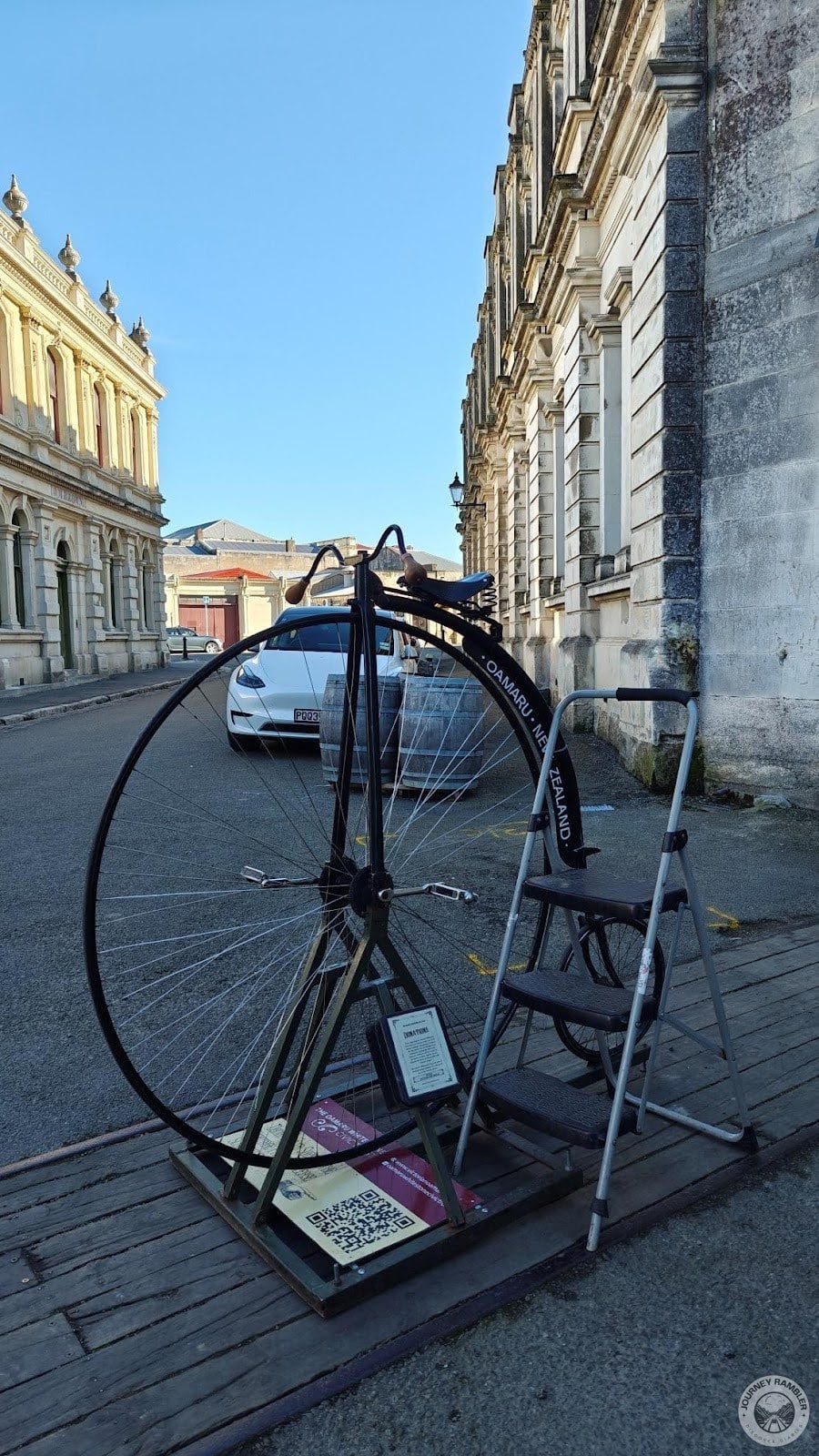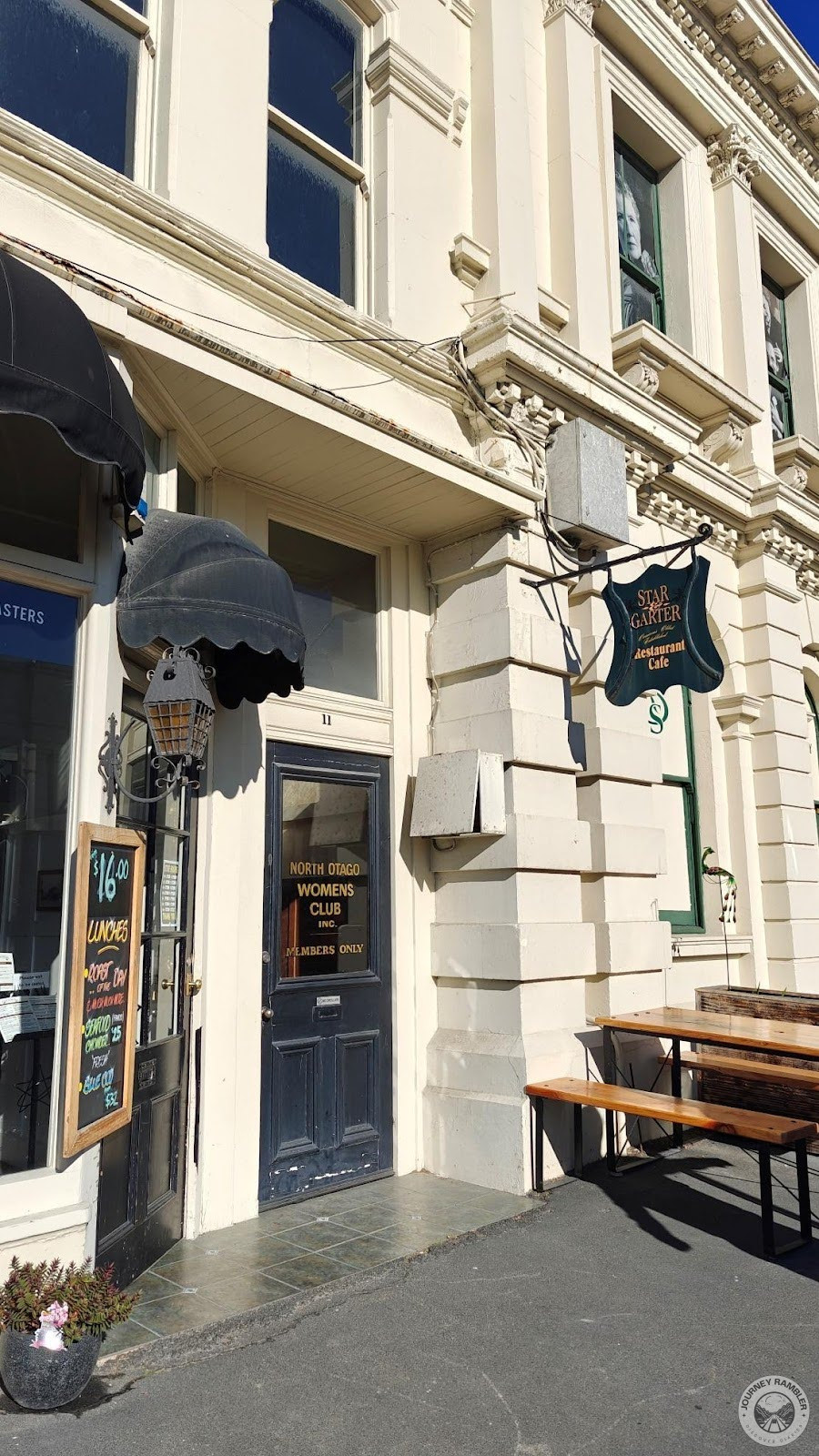If you want a glimpse of what a Victorian town looked like and you’re in New Zealand then the Oamaru Victorian Precinct at Oamaru in the South Island is where you want to go. Even if you’re not that interested in the Victorian era, this town is sure to have something that will catch your attention. I spent some time here looking at the sights as well as taking in its sounds and I actually enjoyed the experience.
Street of Oamaru & Victorian Precinct: New Zealand’s Well-Preserved Victorian Era Heritage Buildings
I started my walk through Oamaru’s Streets and its Victorian Precinct with a view of this huge memorial. Located at Thames Street, this is called the Boer War Memorial and as its name implies, is dedicated to soldiers who fought in the South African War. Unlike with most war memorials, the statue in this one is modeled off of a local trooper (who also fought in the conflict) named David Mickle Jack.
Now before I decided to go down Thames Street, I couldn’t help but notice how lovely this view of Coquet Street was. This is one of the streets leading into Thames Street and if you’re looking for a bed and breakfast here in Oamaru then you’d do well to check out the house with the red roof. As for the houses on the hill, I’m not quite sure if they’re residential or not. All I know though is that they look like cool places to live in.
After admiring the views of Coquet Street, I then started my walk down Thames Street. A couple of steps past the Boer War Memorial, I then came across the Oamaru Opera House. This is another one of New Zealand’s heritage buildings and it’s been around since 1907. Unlike most buildings of that time that were in the Gothic Revival style, this was constructed with the Edwardian Baroque style in mind.
On the same side of the street as the Oamaru Opera House, you’ll find plenty of other Edwardian Baroque buildings. This one in particular is called the Waitaki District Council building and it’s found on the corner of Meek and Thames Streets. Interestingly enough, the building actually predates the Opera House by more or less three decades as it’s been here since 1884.
Perhaps the most prominent feature of the building is an imposing bell tower. You could say that this towers over the whole block and is easily one of the most prominent landmarks here. Surprisingly enough though, the bell tower wasn’t actually an original part of the building. It was only added in 1884 and as a result, it’s a relatively younger 130 years old at this point.
In front of the Waitaki District Council is the Oamaru War Memorial. Construction started on this memorial in 1924 and it was eventually completed in 1926. Aside from the bronze statue of a soldier consoling a small child (admittedly not clearly shown here), the other notable feature of the memorial is its tapering column which is said to measure about 13 meters.
At the intersection of Thames, Itchen, and Tees Streets you’ll find St. Luke’s Anglican Church. Unlike the buildings from earlier, this one was designed in the Gothic Revival style. The church was built in stages from 1865 up until 1913 and from this distance, still looks like it’s been maintained well.
Opposite of the church is this row of what I think to also be heritage buildings. Essentially, these are part of the block where the Oamaru Victorian Precinct is. Across the street (not shown but to the left of this image) you’ll see a sign welcoming visitors to Victorian Oamaru.
Here’s another picture of St. Luke’s Anglican Church with its beautiful spire in full view. It might just be me but it looks more like a castle than a church building. In terms of height, I think this is overall taller than the Waitaki District Council building (which happens to be in the block to the right of this image).
Here’s the sign on the Oamaru Heritage Walking Tours building that I was talking about. The building itself is pretty non descript though it admittedly does have its charms. Then again, a lot of the buildings here are like this which leads me to think that there’s really just something about older architecture that’s just so appealing.
You’ll find this rail line just before the Oamaru Heritage Walking Tours building. This actually looked super interesting and I actually wanted to know where this track would lead. Thankfully, I remembered I was here for a walk through the Oamaru Victorian Precinct so I immediately chucked out that idea.
This is a sign at the end of the center island of Thames Street (going into its Itchen and Tees Streets junction) welcoming visitors to the Oamaru Victorian Precinct. Off to its side, there are fingerposts with the names of the precinct’s notable buildings. You’ll also notice St. Luke’s Anglican Church in the background and just how large it looks from here.
Here’s a wider angle view of the sign as well as the adjacent streets to it. I’m not sure if this was just when I visited but it seemed like there weren’t that many visitors here. It’s quite understandable though as Oamaru isn’t exactly as popular as South Island favorites like Queenstown and Christchurch. Personally, I liked that there weren’t that many people.
If you did an about face from the welcome sign, you’ll then see almost the entirety of the Thames Street that I walked down earlier. In this image you’ll see the Waitaki District Council building as well as the Great War Memorial in front of it. Then in the foreground you’ll notice the tracks of the rail line that I came across just before the Oamaru Heritage Walking Tours building.
Here you can see St. Luke’s Anglican Church’s bricks and windows. If you’ve read my writeup of Dunedin Railway Station then you’d probably notice how similar both of these buildings’ brickwork patterns are. Well, it shouldn’t be surprising considering both are prime examples of buildings made in the Gothic Revival style.
One stark difference between Dunedin Railway Station and St. Luke’s Anglican Church though is the absence of grotesques in the latter. The railway station looks much more affluent with the grotesques on the roof of its bell tower while the church is decidedly much more austere with its plain spire.
So one of the first establishments that you’ll really come across as you start your walk of Oamaru Victorian Precinct is this rather cute restaurant called Cucina. It’s a Spanish, South American, and Italian fusion restaurant that seems to get some really nice reviews online. So if you want to load up on food before your walk then you might want to check this place out.
Cucina is pretty hard to miss since, as I said earlier, it’s one of the first establishments that you’ll come across once you start your walk of Oamaru’s Victorian Precinct. Here you can see that it’s at the corner of Itchen and Tees Streets. Directly across Itchen Street from it is the Oamaru Heritage Walking Tours building (which is also where I’m standing when I took this shot).
Down Itchen Street you’ll then notice another large building called Steampunk HQ. I’m actually going to be talking about this in another article but suffice to say, it’s an absolute must-visit if you’re a fan of the Steampunk genre. It has plenty of eclectic Steampunk-inspired sculptures and art installations from local artists.
This is a display on the Inc Design Store that’s also in the same building as the Oamaru Heritage Walking Tours building. It’s a concept store that sells a wide range of decors and creatives made in-house as well as from other independent creators (that I think are also based locally). I checked out their site and the designs on some of the stuff they sell are really cute albeit the prices can get a little steep.
Here are a couple of other decors/creatives that you’ll find on display at the Inc Design Store. If you are looking for something to remember your visit by and aren’t too worried about the cost then I think you might find a lot to like here. The store pretty much has everything from jewellery, ceramics and glassware, cards and stationery, footwear, and even art (just to name a few).
Here you’ll see part of the Oamaru Steam and Rail Society’s Harbourside Station with some of the art installations from Steampunk HQ visible in the background. So this is part of the rail track that you saw earlier and while it might look old, it’s still actually operating albeit only on Sundays. That said, if you happen to visit on Sunday then you might want to look into booking the tourist trains that run through here.
Right next to Steampunk HQ is a building called The Woolstore Complex. It’s one of the oldest buildings in the area as it’s been here since 1881. It’s gone through some restoration work over the years and now it mainly serves as the home for several art galleries, a cafe, and a couple other establishments/attractions.
Across Harbour Street from the Woolstore Complex is another notable heritage building here in the Heritage Precinct called the Criterion Hotel. For some reason I initially thought the hotel was connected to the Criterion Collection. Other than the similar names though, both have no connection whatsoever.
The Criterion Hotel has been around since 1877 which makes it a whopping 144 years old. Now, we’ve already seen Edwardian Baroque and Gothic Revival buildings throughout this walk. What do you think is the building’s architectural style? Surprisingly, it’s neither of the two. The building was designed in the Italianate style which also was popular during the Victorian era in the UK and its colonies at that time.
Across the street from the block where the Criterion Hotel was in, I came across a really unique building. At first glance it looked seemingly normal but when you look closely at its first floor windows and doors, they’ve all been replaced by bricks. This is the former Union Bank of Australia building which was completed in 1879 and is an example of the Venetian palazzo style of architecture which also was popular in Victorian times.
The buildings aren’t the only things worth checking out here though. On the sidewalks you’d also come across artisanal produce like these intricately designed beeswax candles. Honestly, these look really nice that I’d probably end up not lighting them and just keeping them as decoration around the house or office.
Here’s the window to the storefront of Boho Jo, the establishment that sells the beeswax candles you saw in the previous image. The building the storefront is on is the third from the Criterion Hotel. Other than candles, the store has perfumes, candle bouquets, scent bags, soap, and other products that could work really well as souvenirs.
So aside from Tyne Street, the other street that makes up the Oamaru Victoria Precinct is Harbour Street. These two streets run parallel and are also connected. In my case, after reaching the intersection of Tyne and Wansbeck Street, I turned left until I got to the Wansbeck and Harbour Street intersection.
Now you’re probably wondering, “is there even a reason to be here in Harbour Street?” There’s actually plenty! One of those is the establishment in the image above. Whitestone City is one of the attractions of the whole Victorian Precinct and it’s basically a recreation of a colonial town complete with costumed guides and interactive exhibits.
So this is the entrance to Whitestone City and it already features a mannequin with Victorian era clothing. Now I was actually quite interested in this attraction but then I realized that I still had stuff to do and other places to visit. Now if you had time on your hand, I’d definitely recommend checking this out if you do drop by Oamaru.
Whitestone City is open daily from 10:00AM to 4:00PM. This makes it relatively easy to squeeze into your itinerary since you already know its daily availability. More importantly, it’s one of those “pay what you want” establishments. Essentially, you decide how much you’d like to pay or how much you think is fair for what you experienced.
Now I’ve been to a lot of attractions and galleries the world over in the past year and I must admit, there haven’t been that many that have a pay what you want model. My initial thought upon learning about this was, “how the hell are they even making money off of this?” Then I realized that for the Oamaru Whitestone Civic Trust, making money probably was the farthest thing on their minds.
Considering how the NZ government likely subsidizes heritage buildings like this, there probably is no need for the Oamaru Whitestone Civic Trust to charge visitors. The pay what you want model likely is just there to augment the subsidies and more importantly foster a sense of civic pride for the local visitors.
A couple of storefronts after Whitestone City is another of the notable attractions here at Harbour Street. This is Miss Purple’s Studio Realm and no, it’s not the same establishment as the Steampunk HQ that I talked about earlier (even though it’s also called Steampunk Central). It does feature a lot of steampunk themed art and trinkets but not on the scale as Steampunk HQ.
Really, a lot of the Steampunk stuff I saw inside were clothes and trinkets. That said, the whole vibe of the place was really comforting for some reason. It’s like you really just want to get a chair, sit down, and talk about stuff when you’re here.
Rather than a Steampunk-themed store, it really does feel more like an avant-garde cafe. I’d guarantee that if they somehow turned this into a coffee bar as well then this would really end up being a hit for plenty of visitors. As it is now though, it’s still an interesting shop here at the Oamaru Victorian Precinct (just like the Buggy Robot Gallery).
Moving on from Miss Purple’s Studio Realm, I found myself nearing the end of my walk here at Harbour Street. Now I was quite ready to call it a day at this point but then I came across this peculiar looking device. I initially thought this was just another Steampunk art installation since I was pretty close to the Steampunk HQ after all.
It turns out, this is actually what bicycles looked like during the 1870s and 1880s. Called penny-farthing bicycles, these were really popular towards the end of the Victorian era. This one is pretty well maintained and I think it’s still actually functional. That said, it is bolted down to its stand so you (or anybody for that matter) won’t be taking it out for a spin anytime soon.
Now while you won’t be able to ride this around the area, I do know that people can still go on top of its saddle and turn the pedals. That’s actually what the small ladder is for. Knowing this, I still didn’t dare try sitting on it cause it simply was just too tall for me.
I found myself back at Itchen Street and saw this restaurant called Star and Garter. Since I was feeling a bit hungry from all the walking around, I decided to then end the day by spending some time here. Overall, the Oamaru Victorian Precinct walking experience exceeded my expectations. There’s a lot of art, architecture, and history here. Perhaps my only real issue was how quick the whole walk seemed.
Anyway, have you ever found yourself at Oamaru’s Victorian/Heritage Precinct? If yes then we’d be more than happy to hear about your thoughts and experiences down in our comments section!

